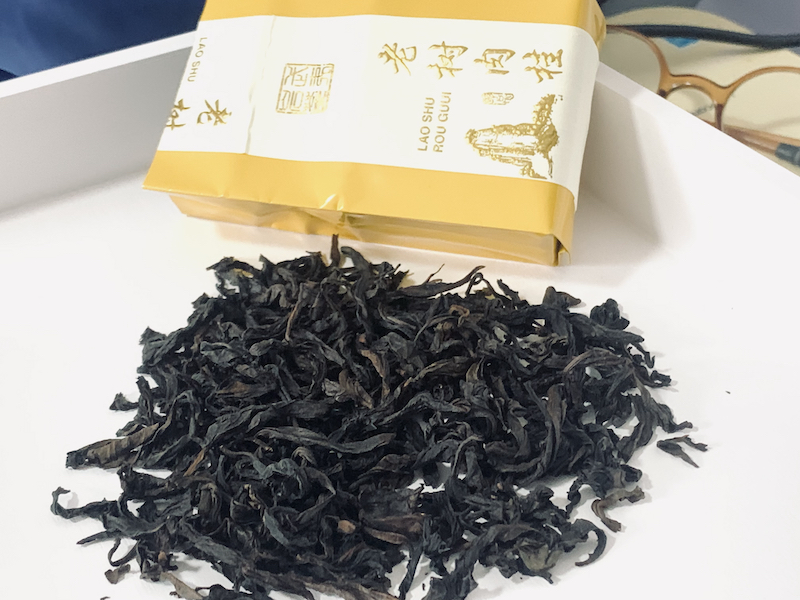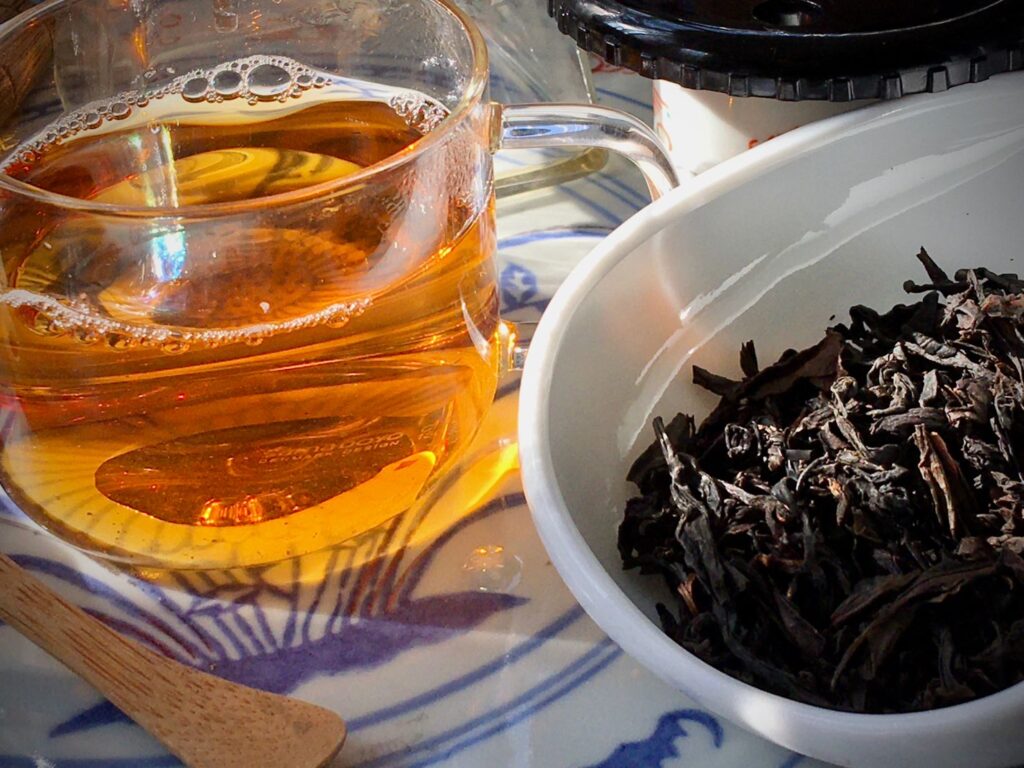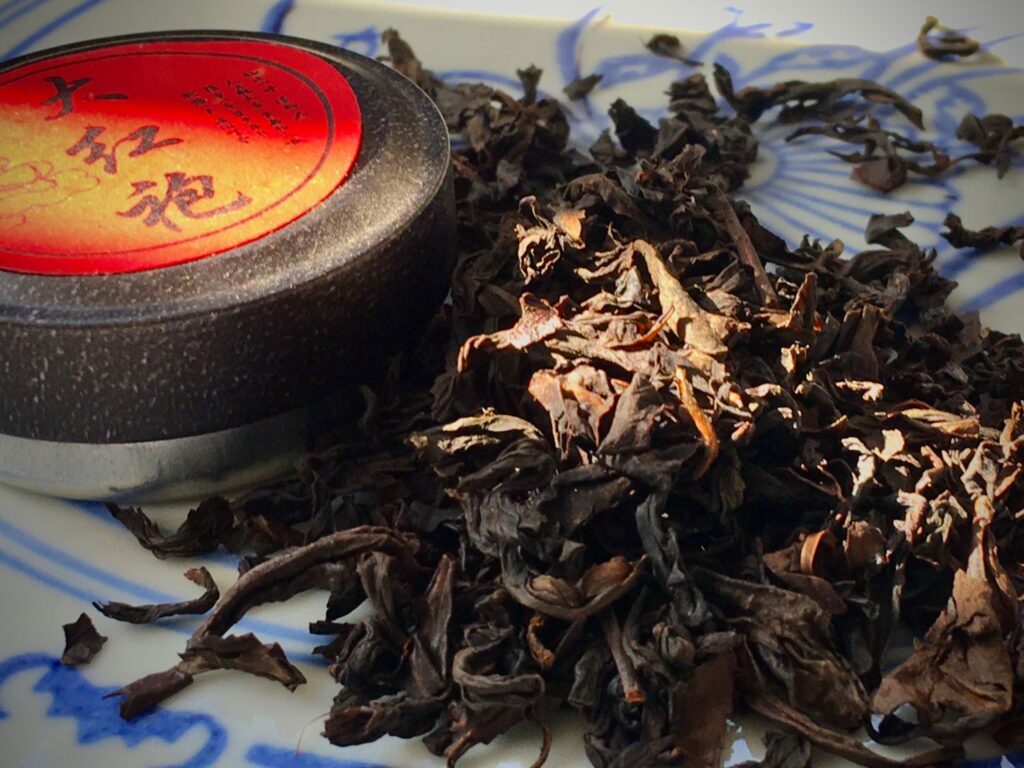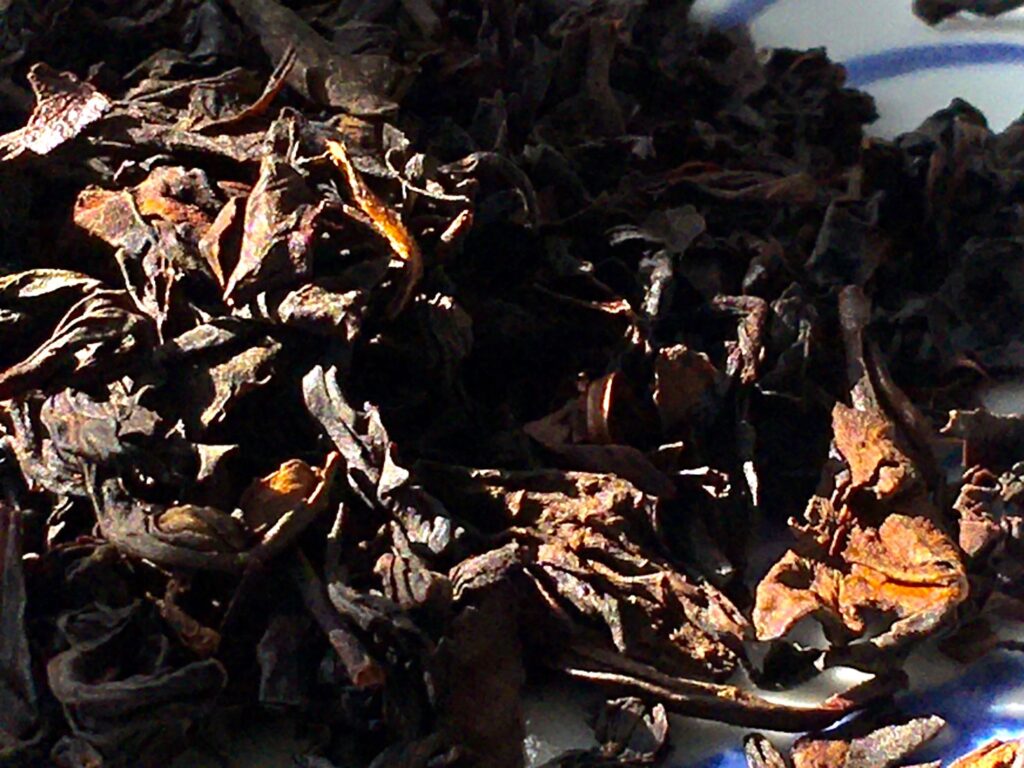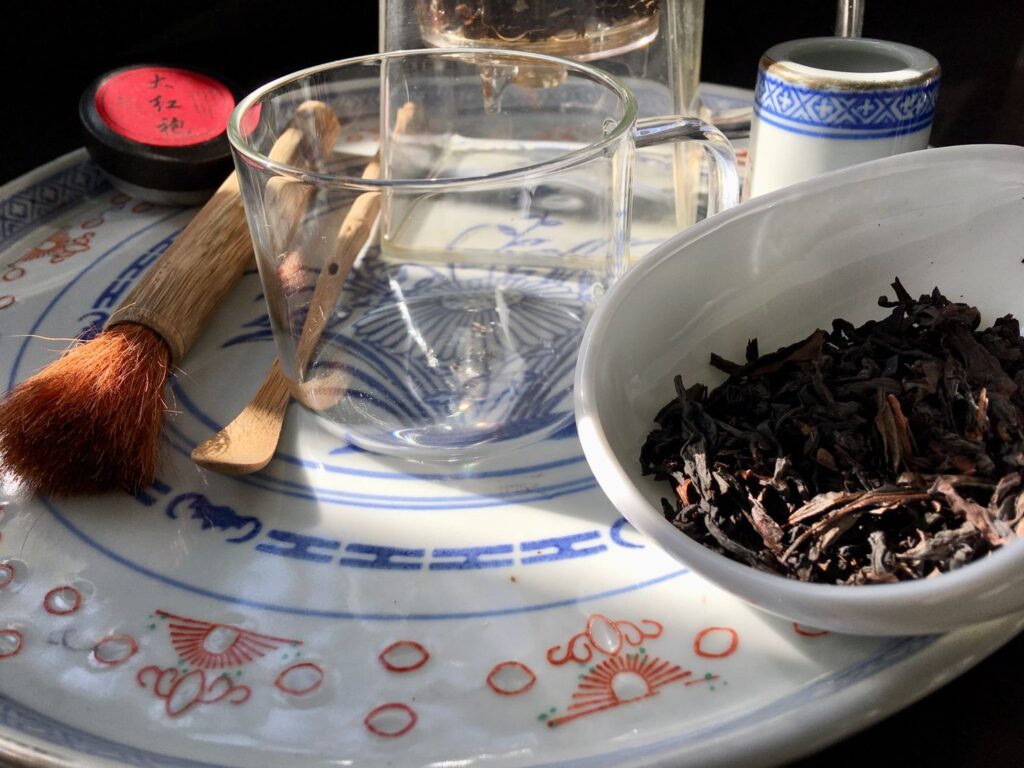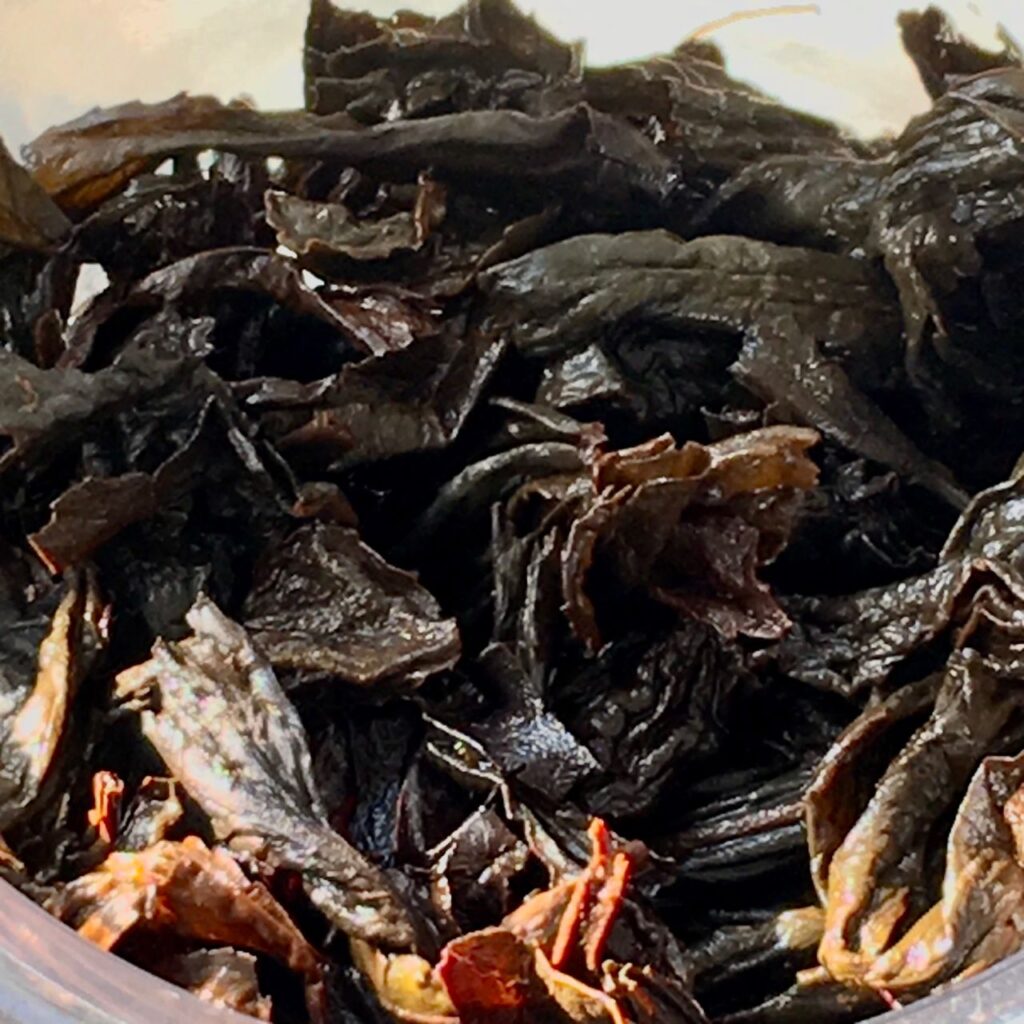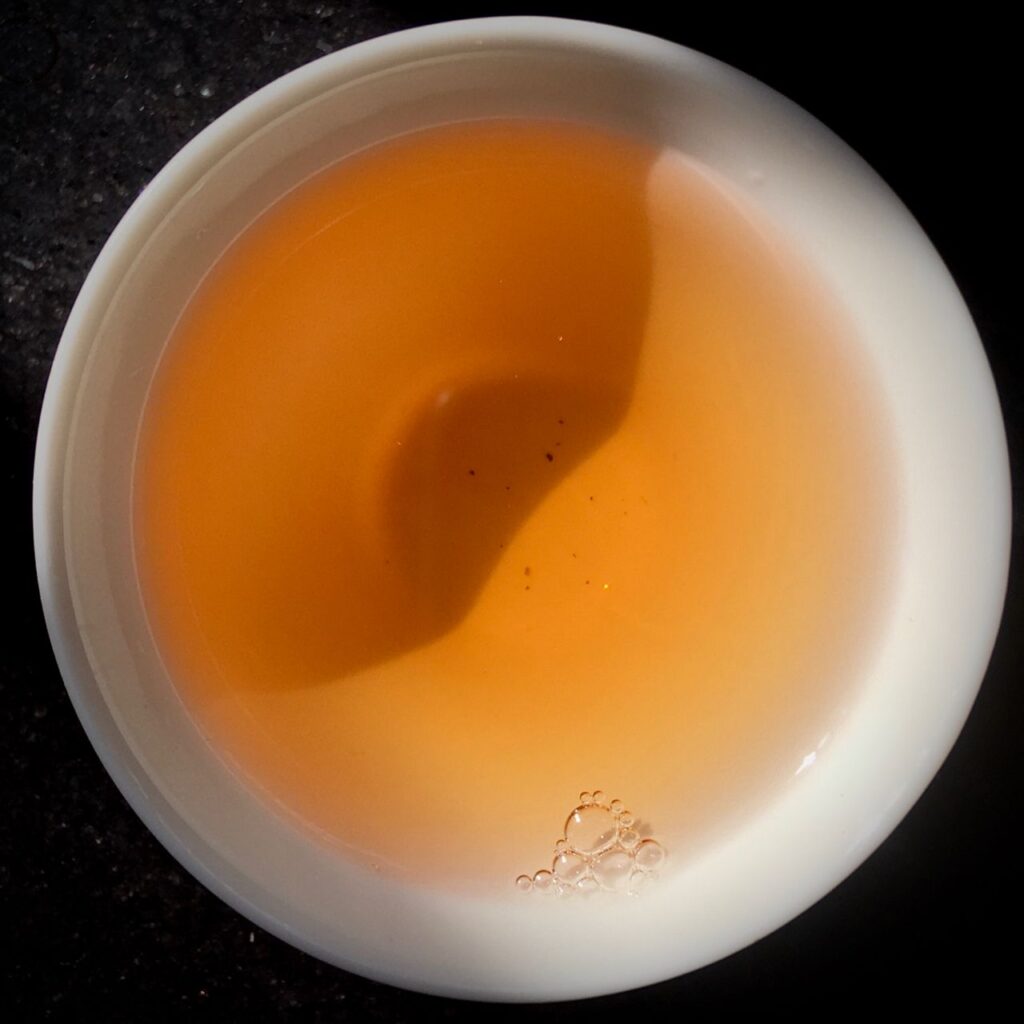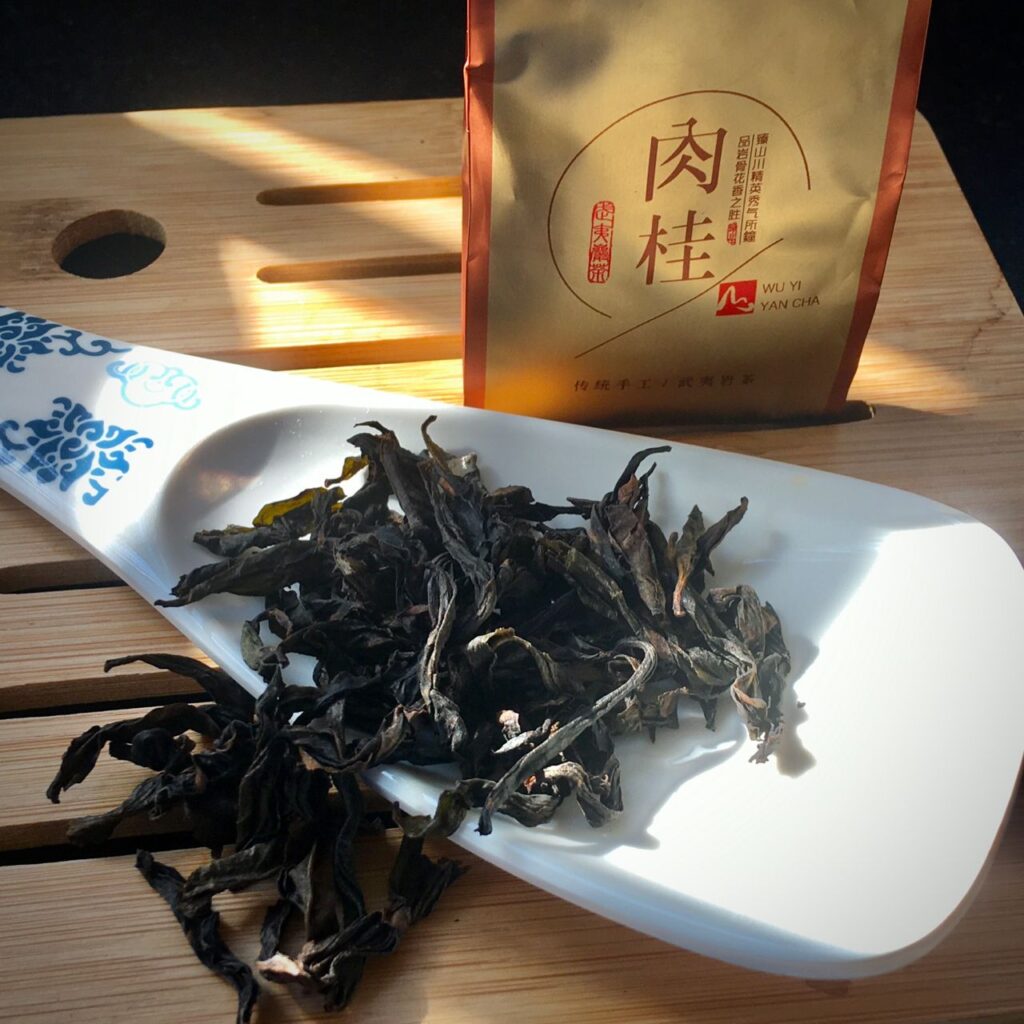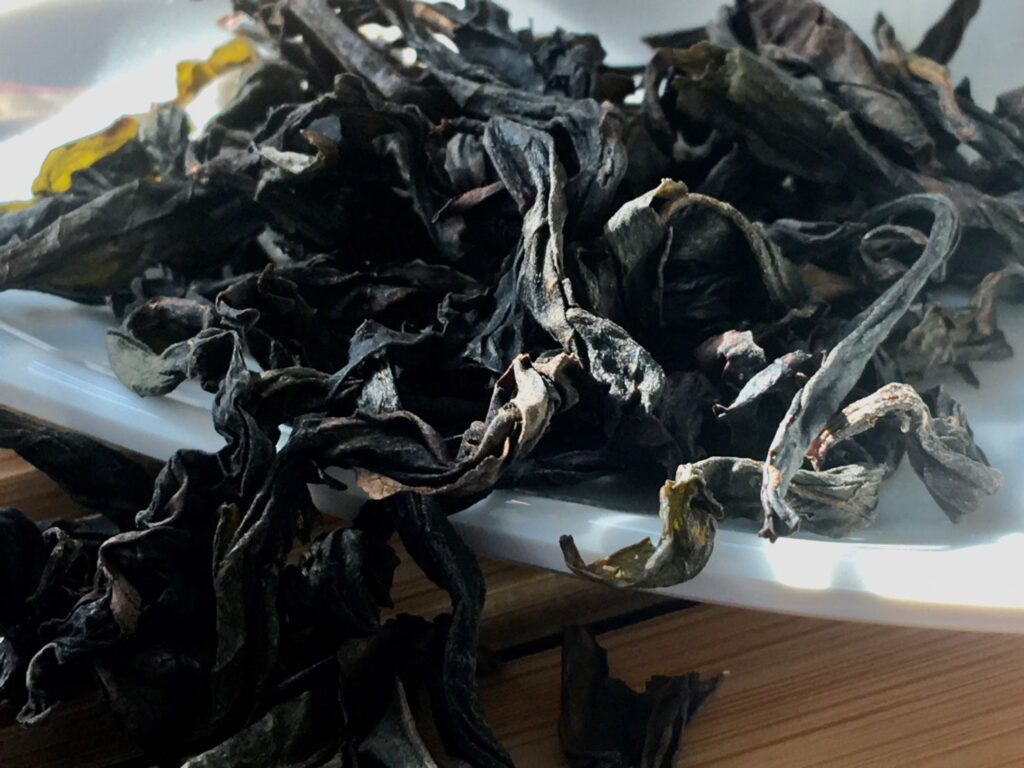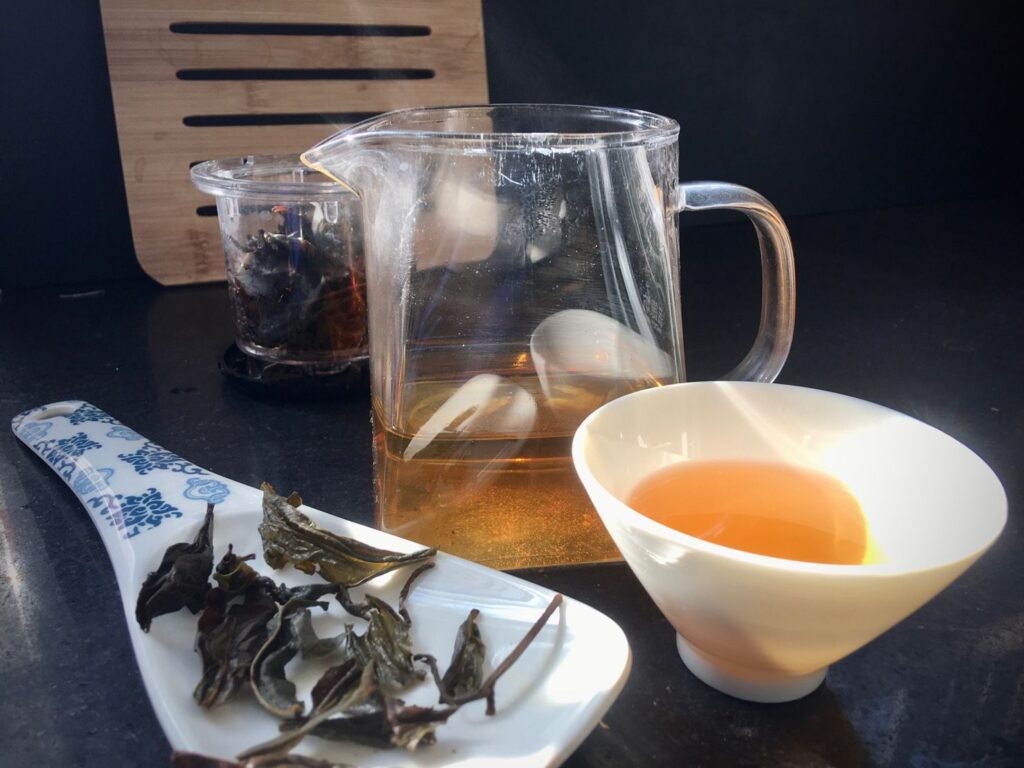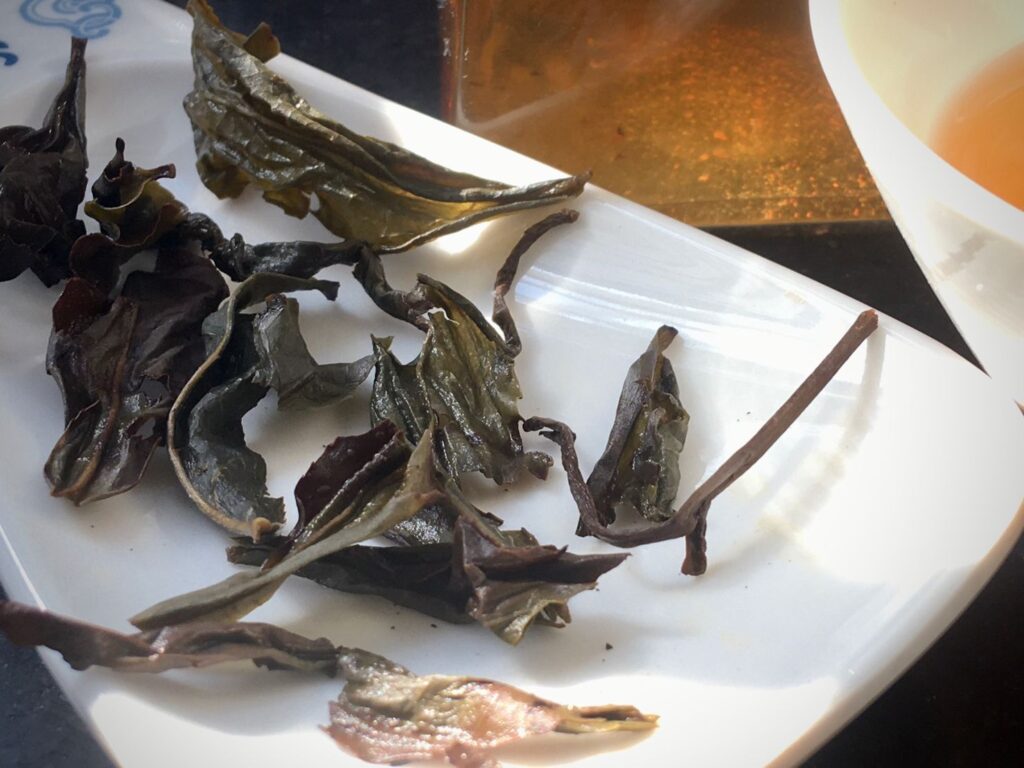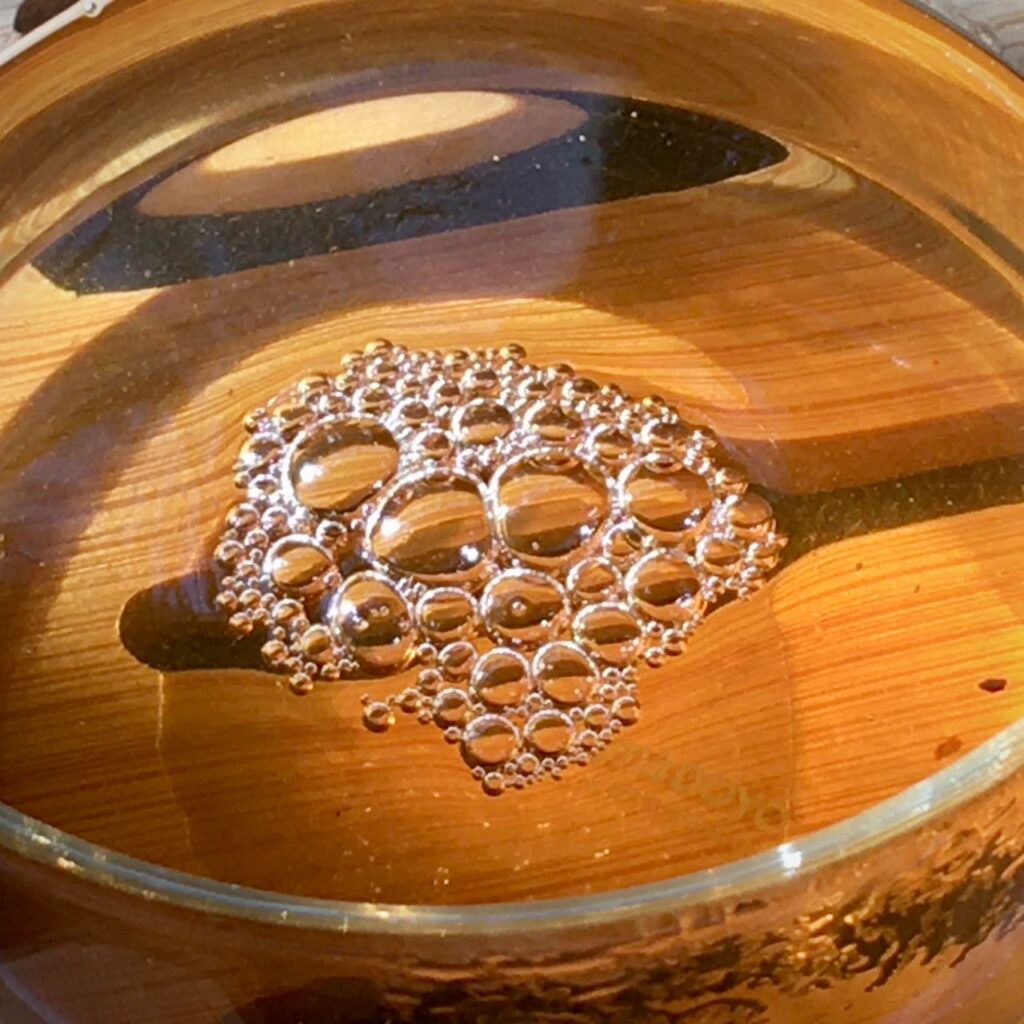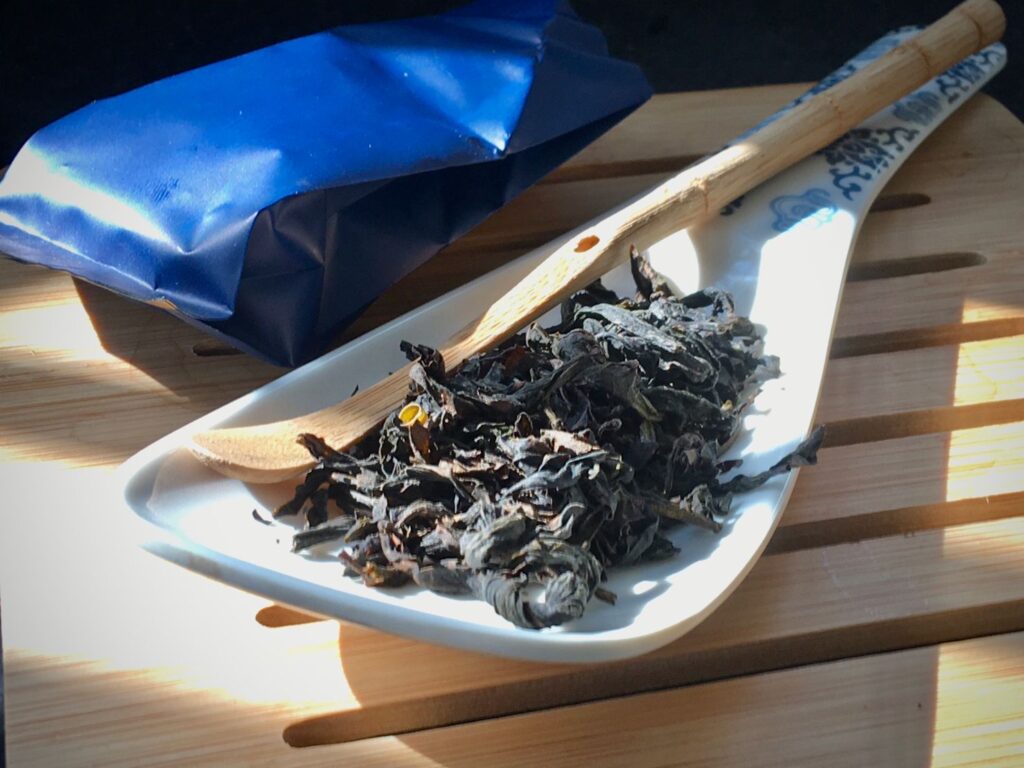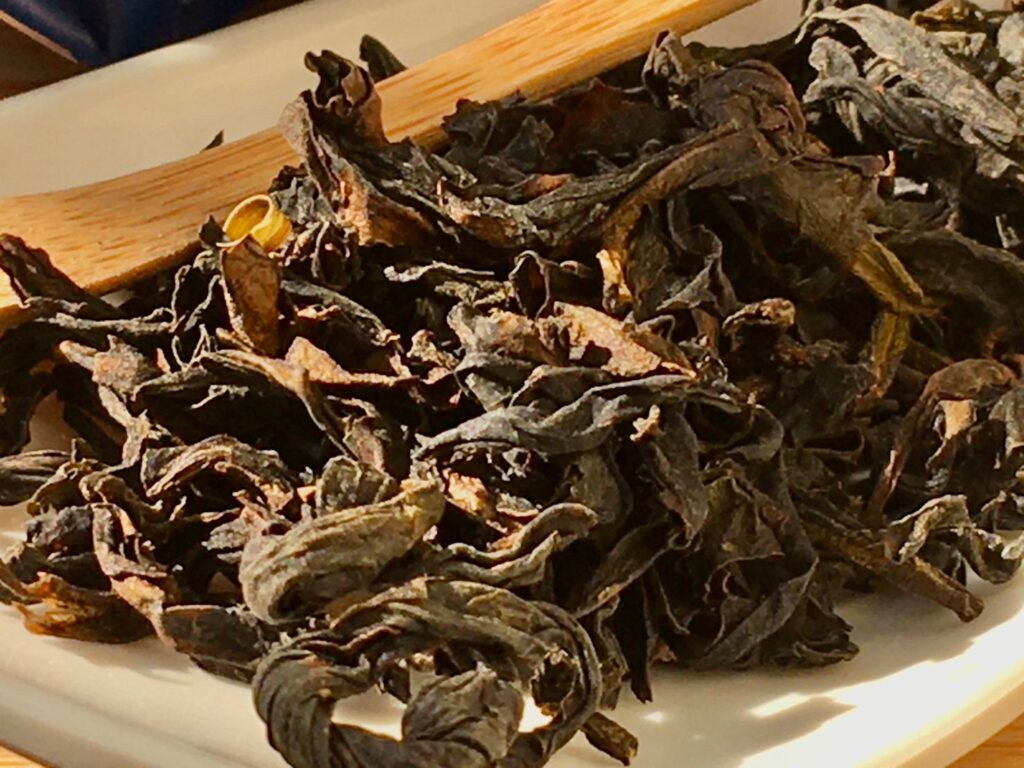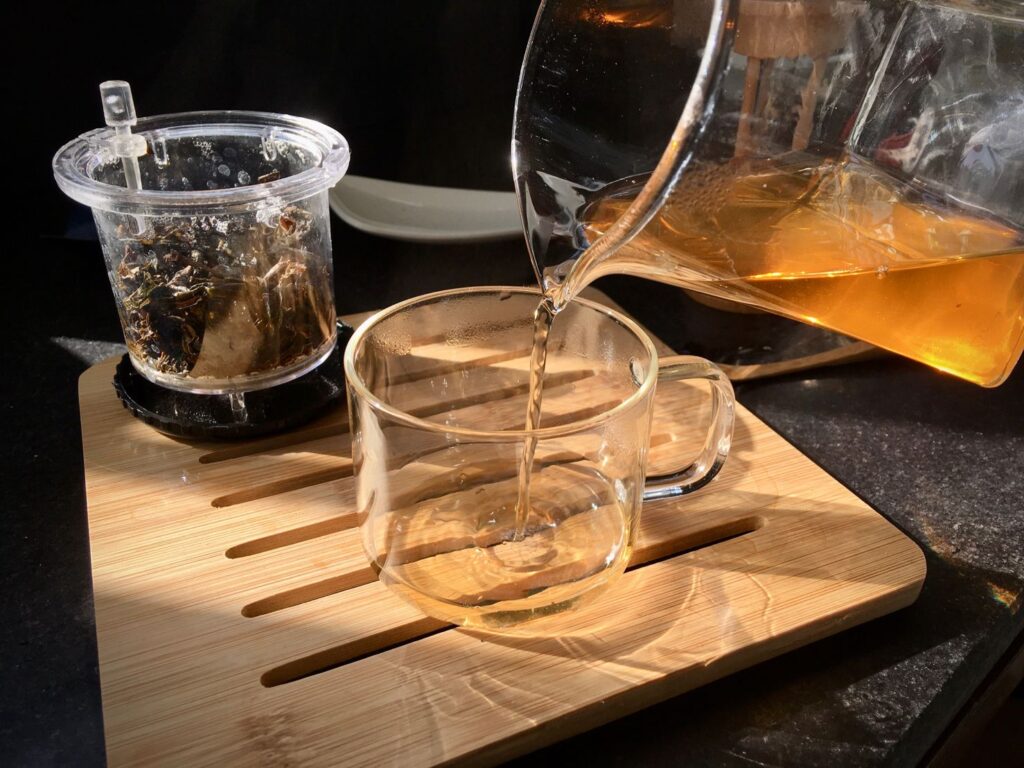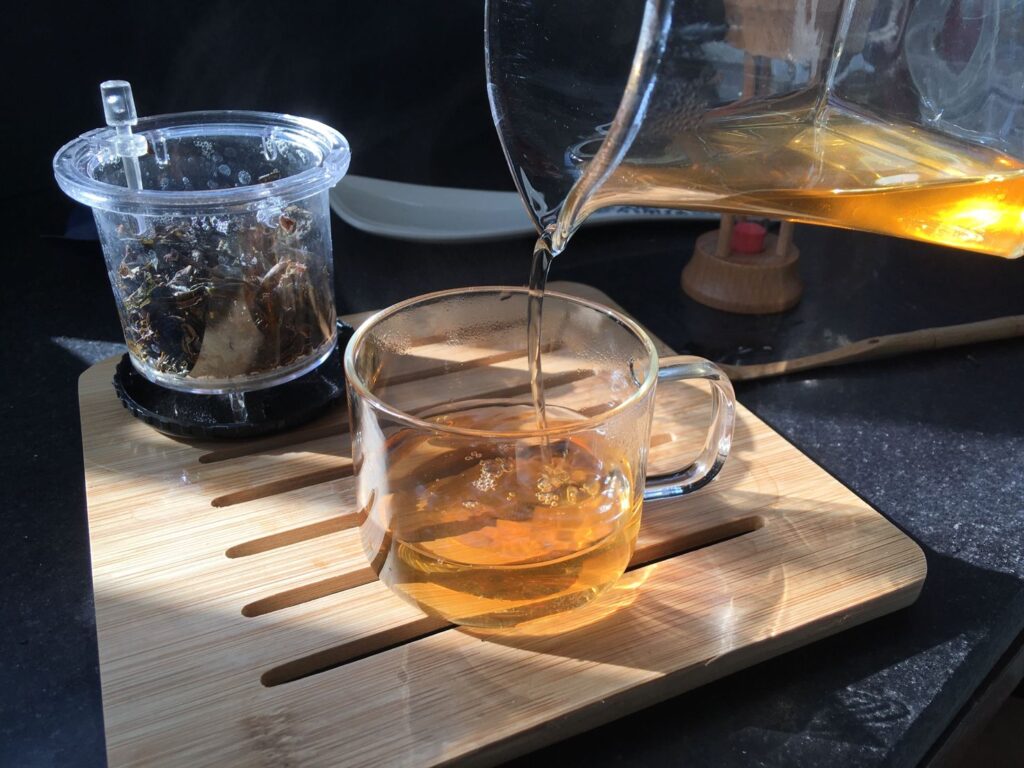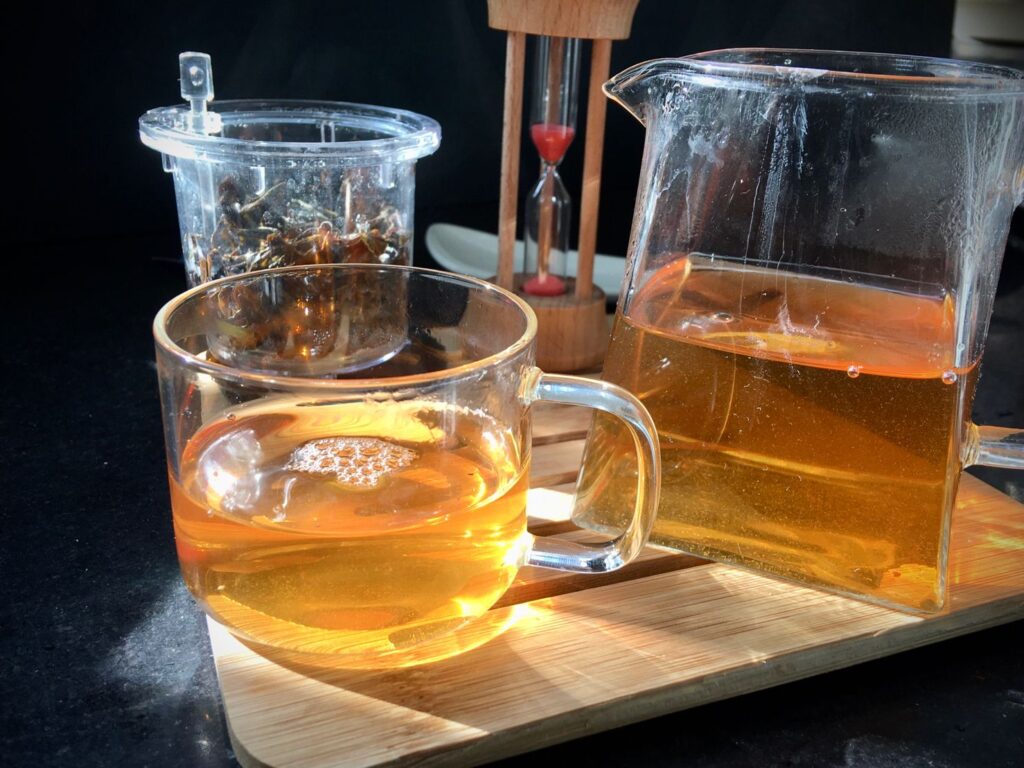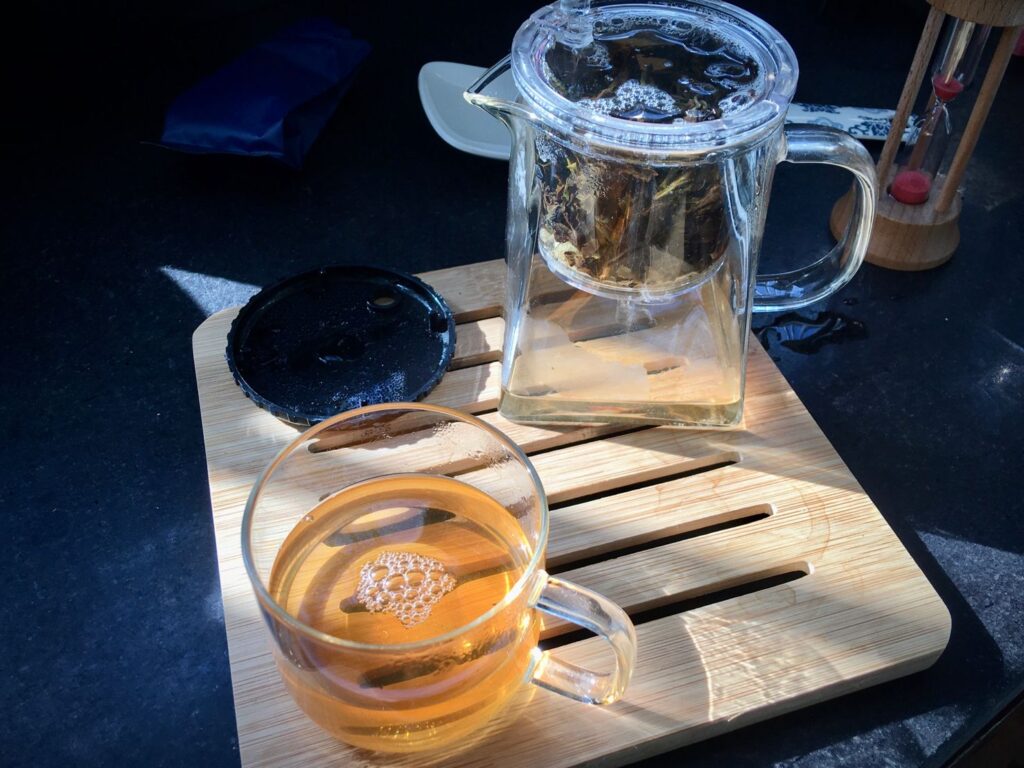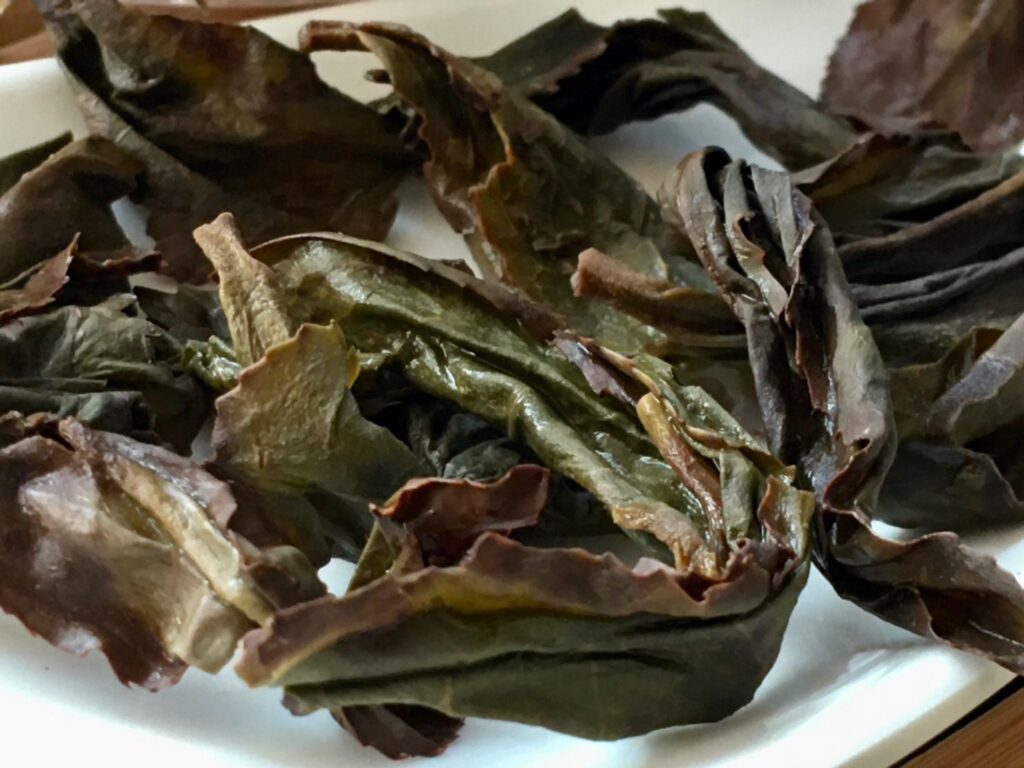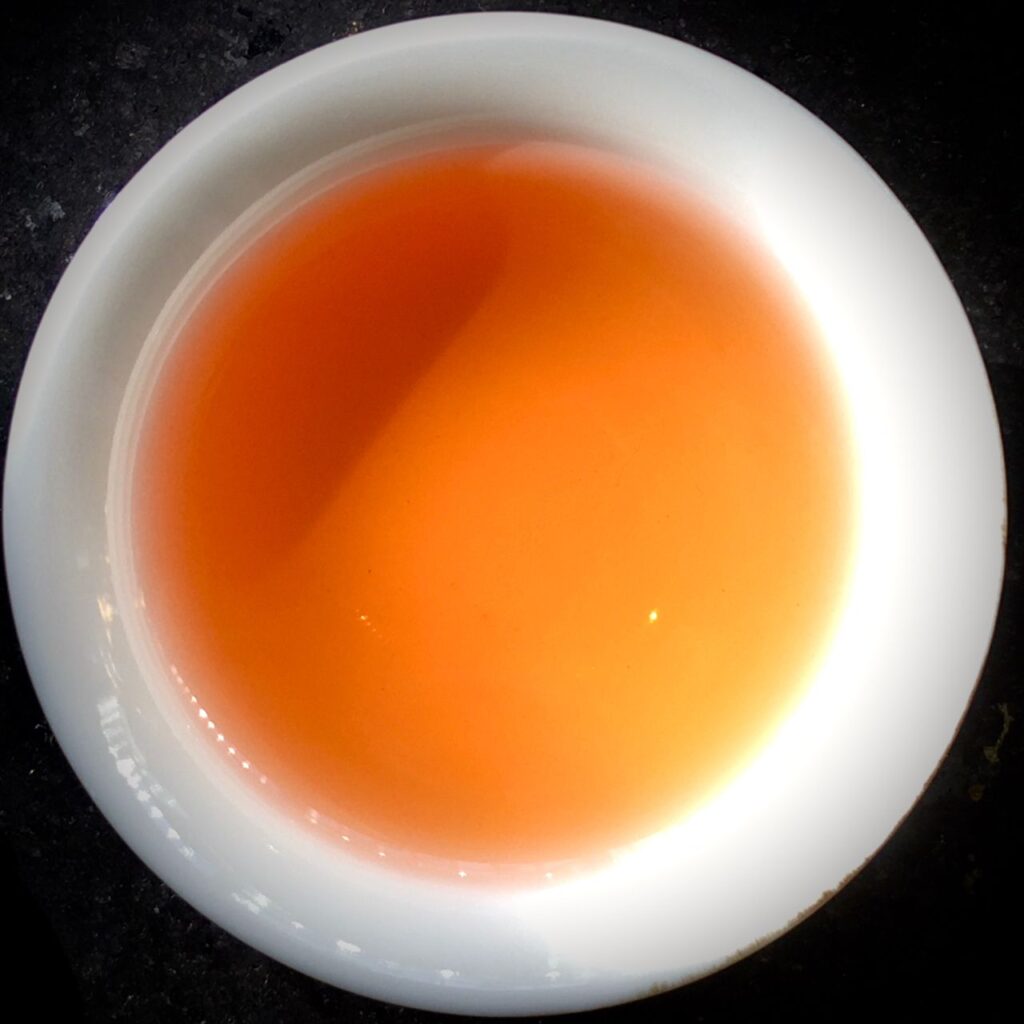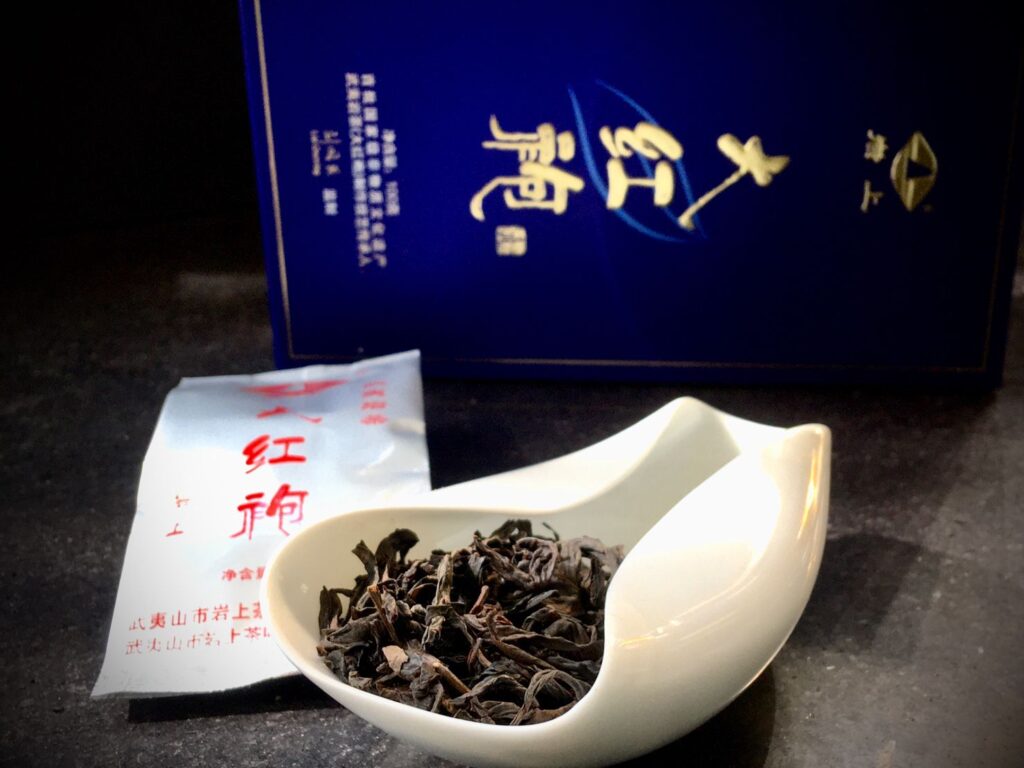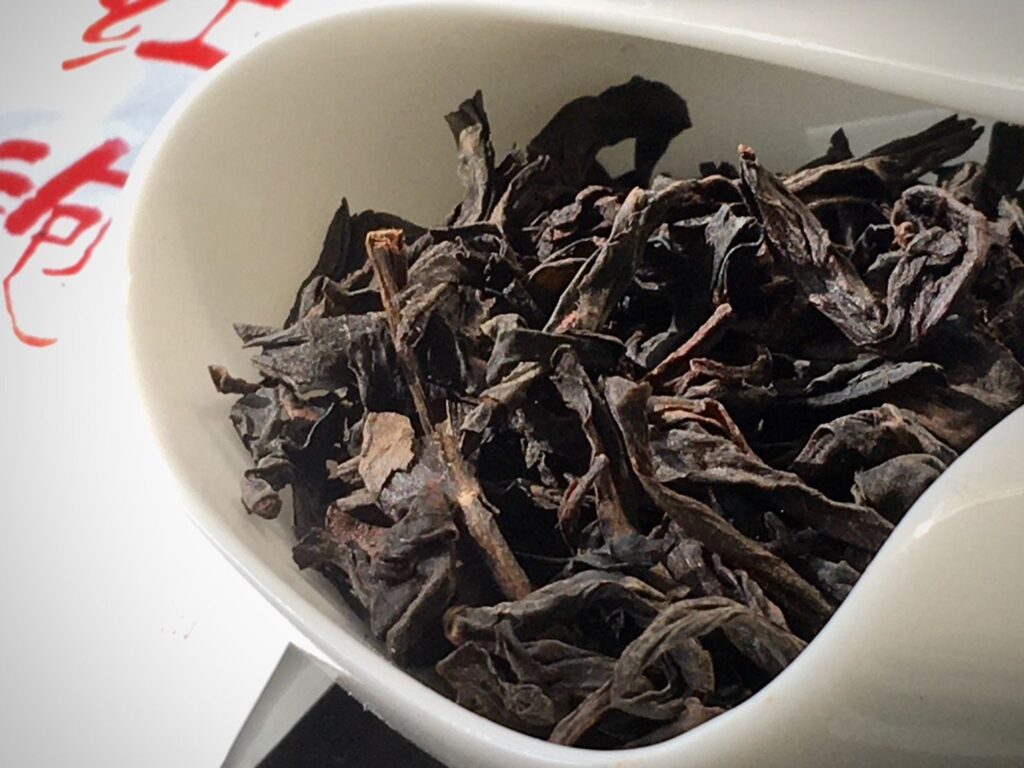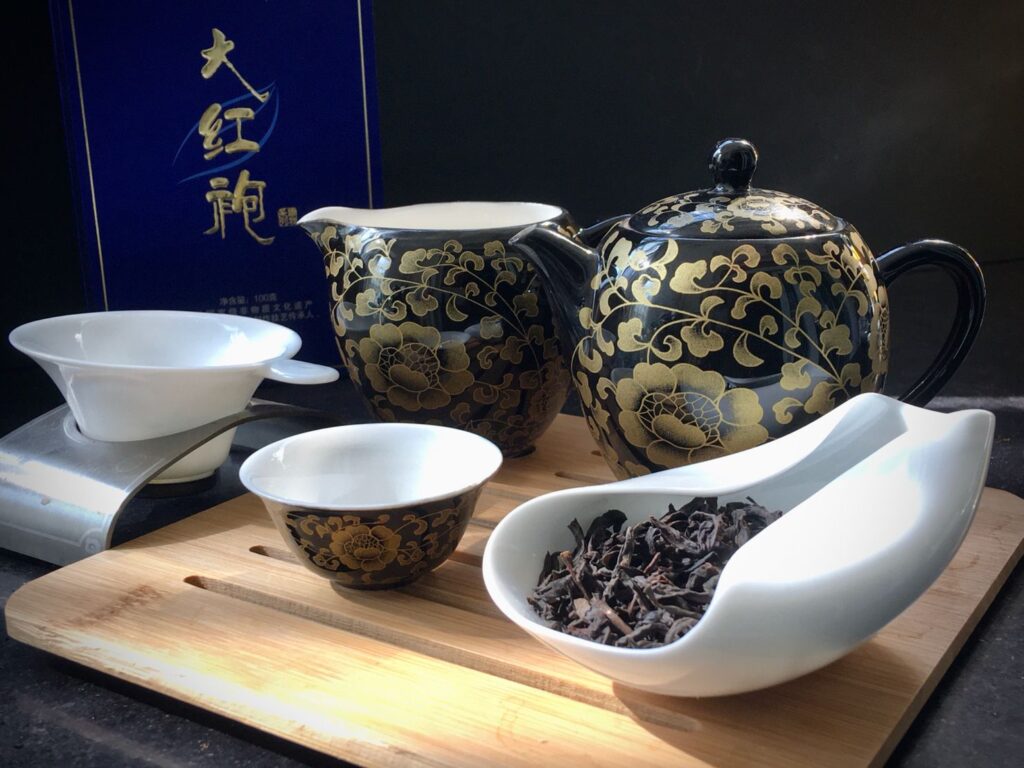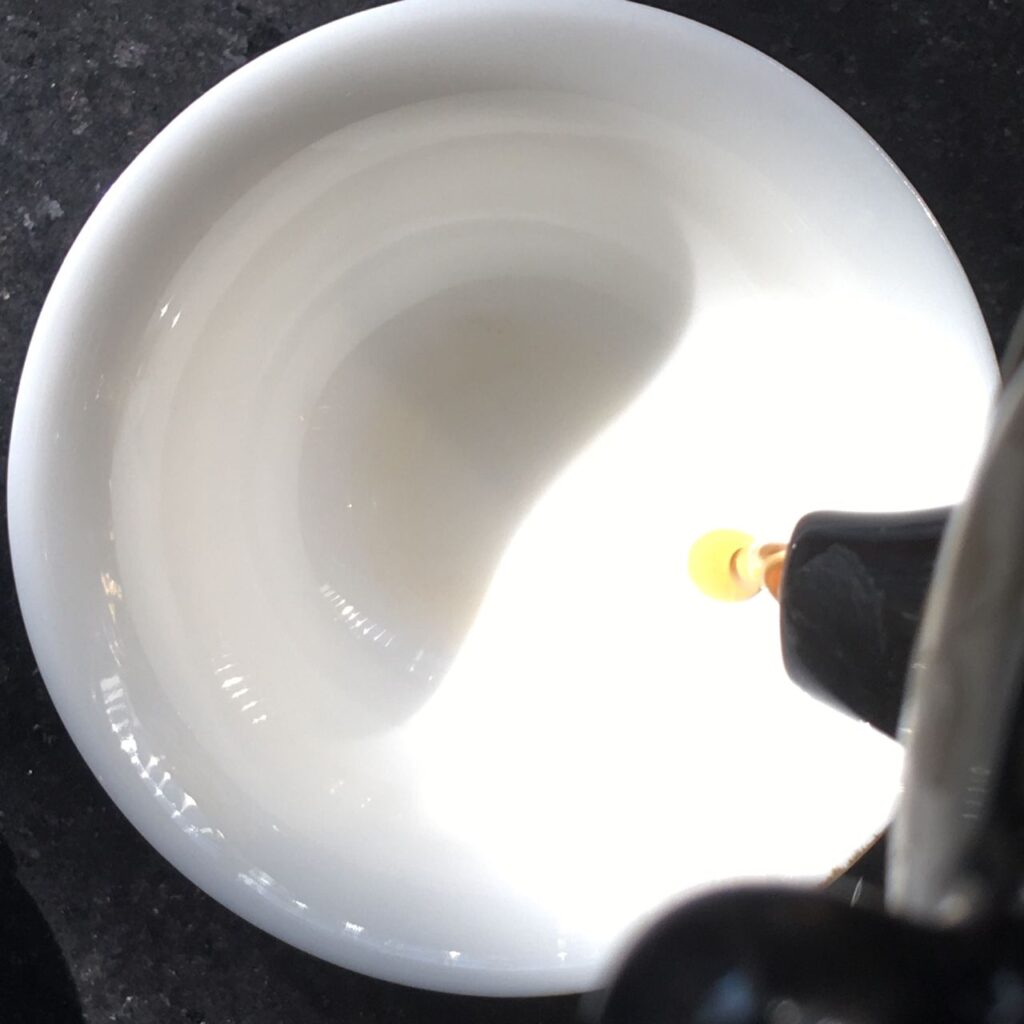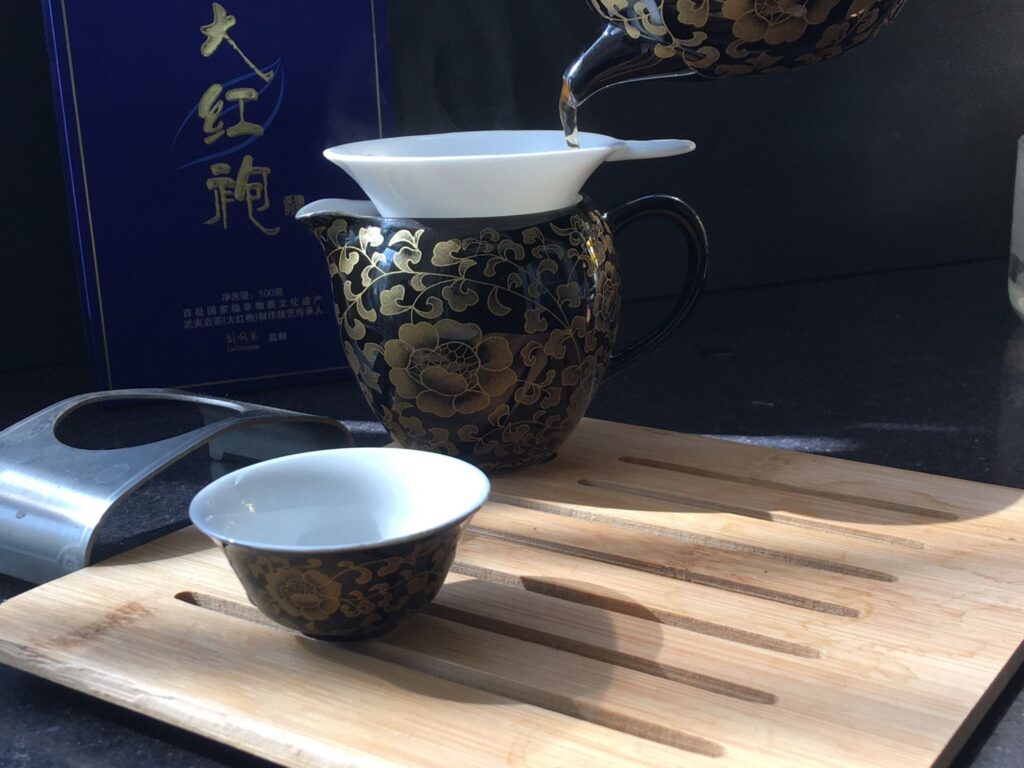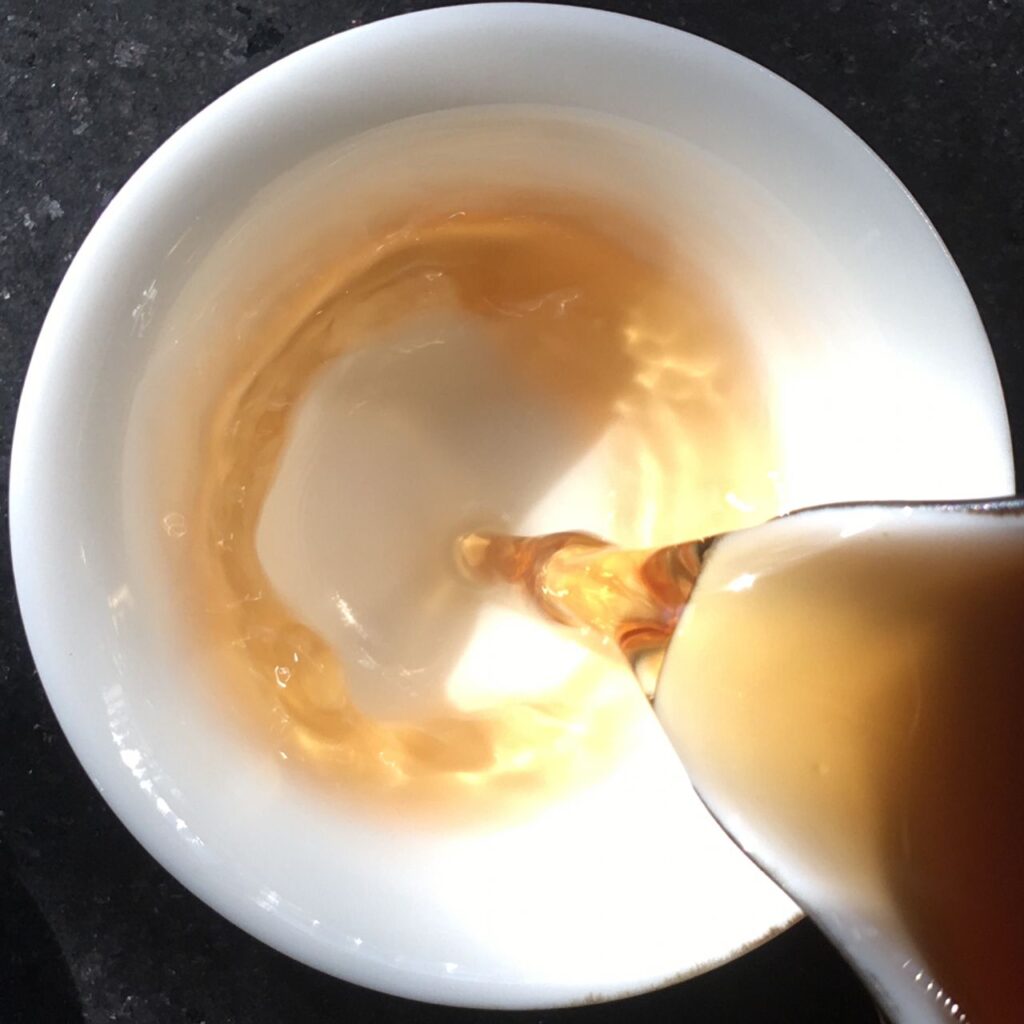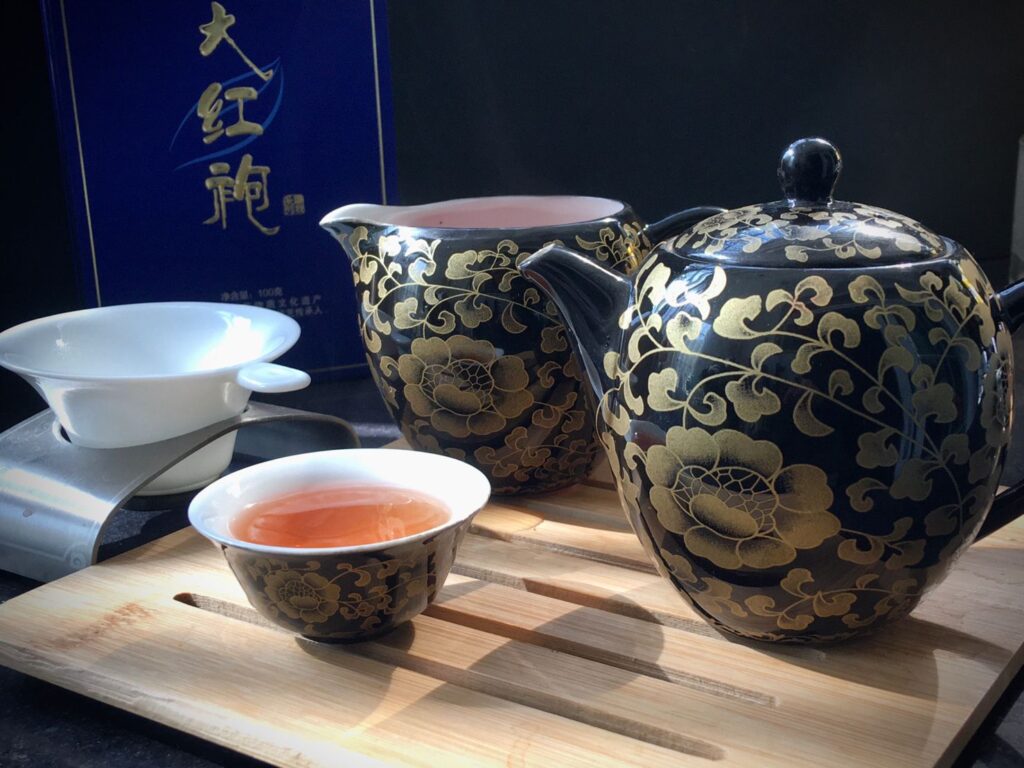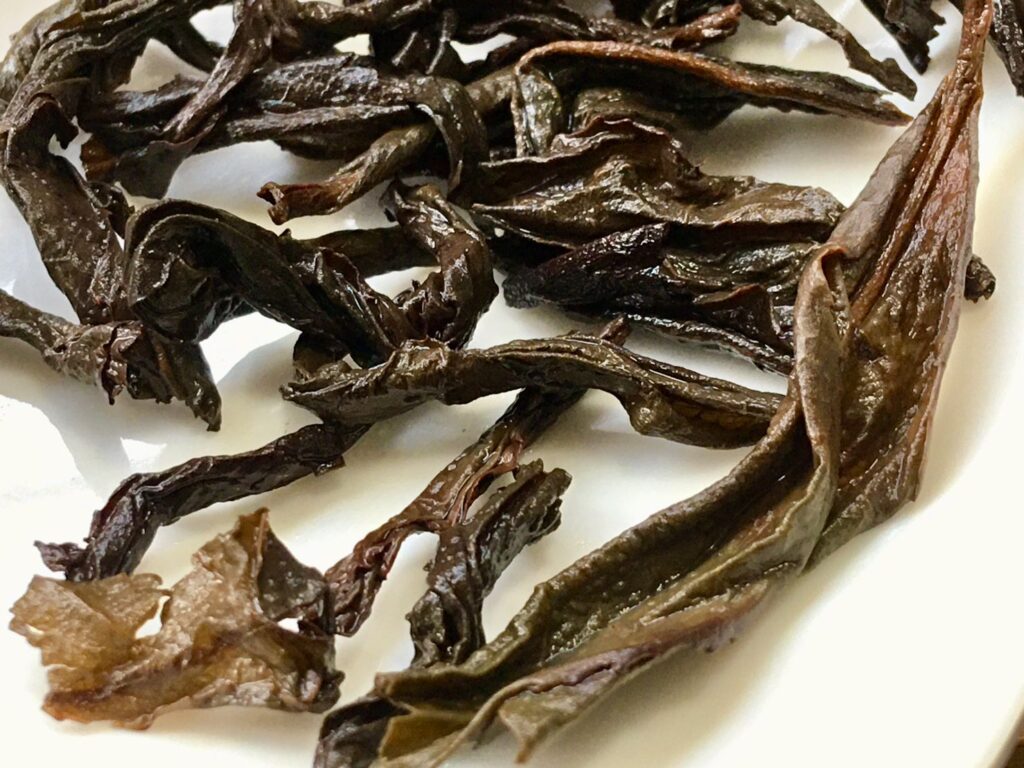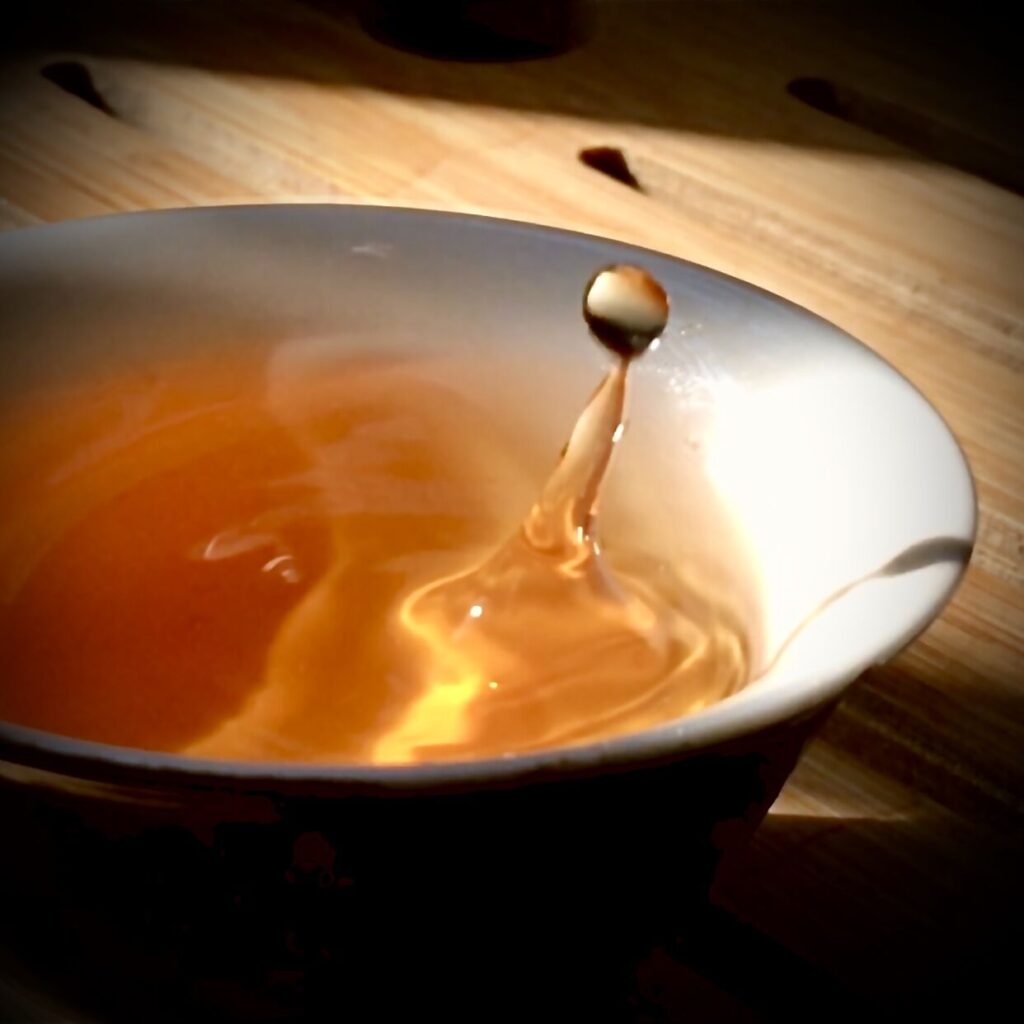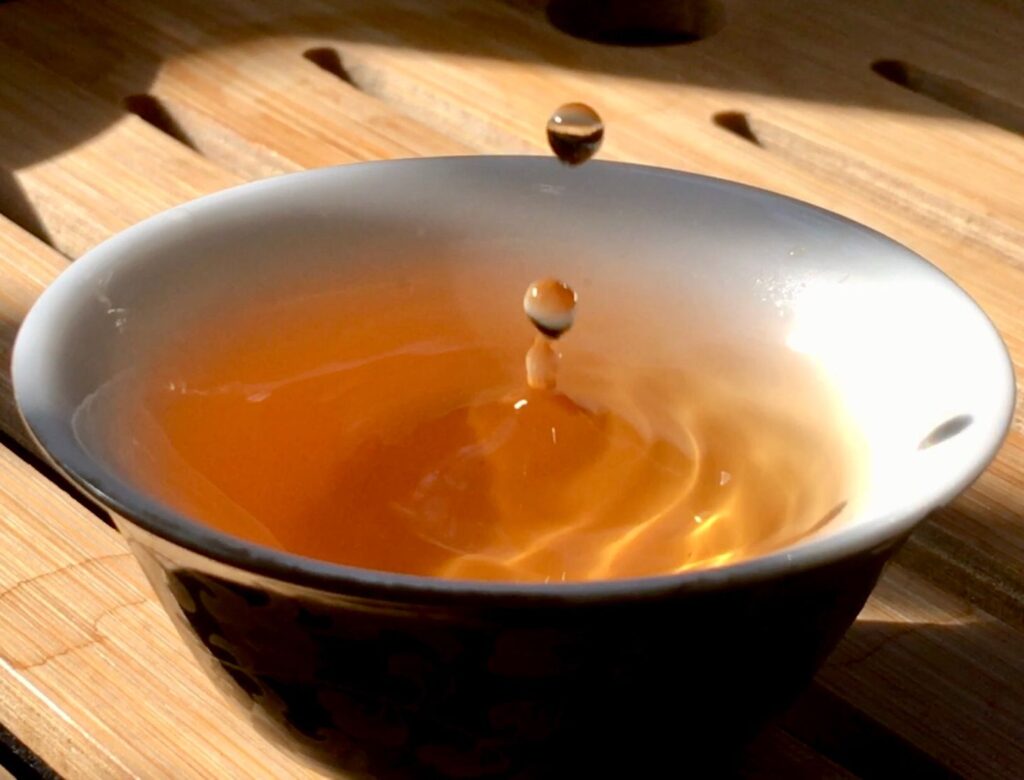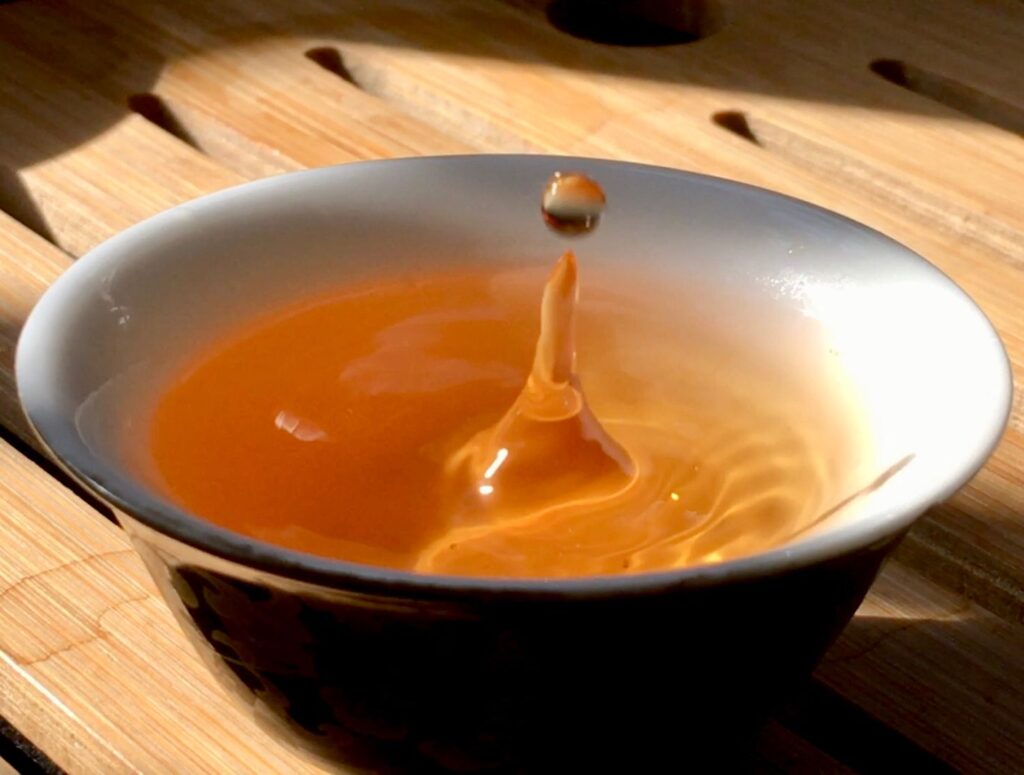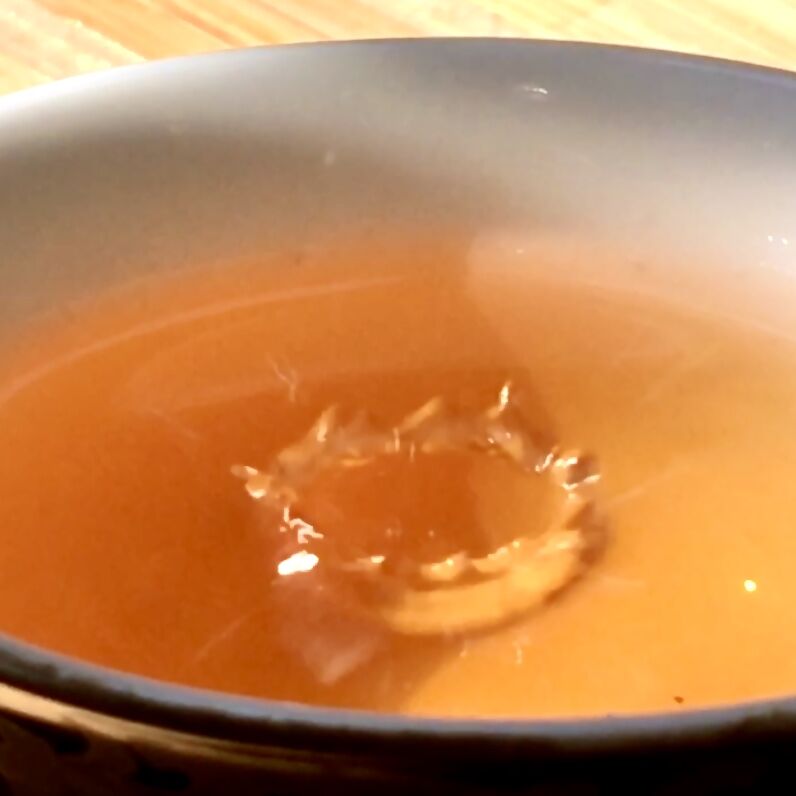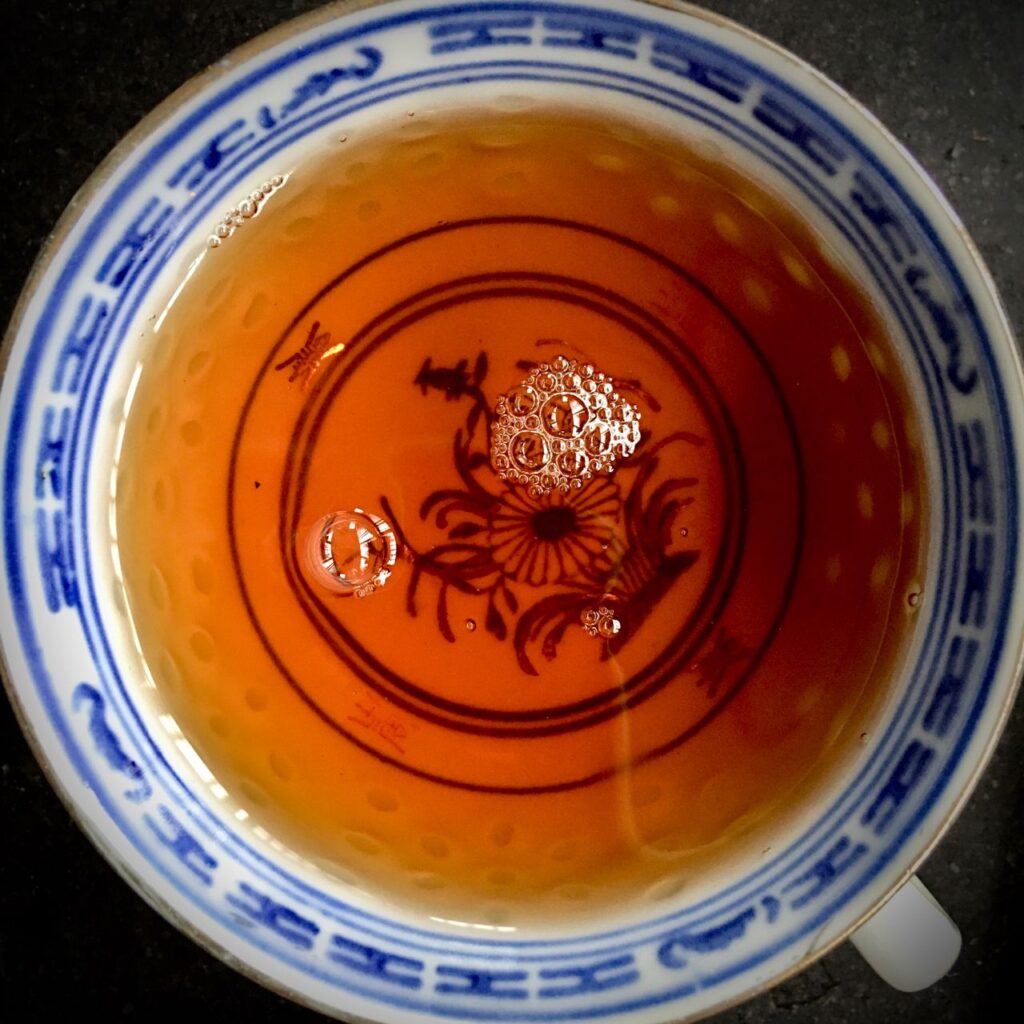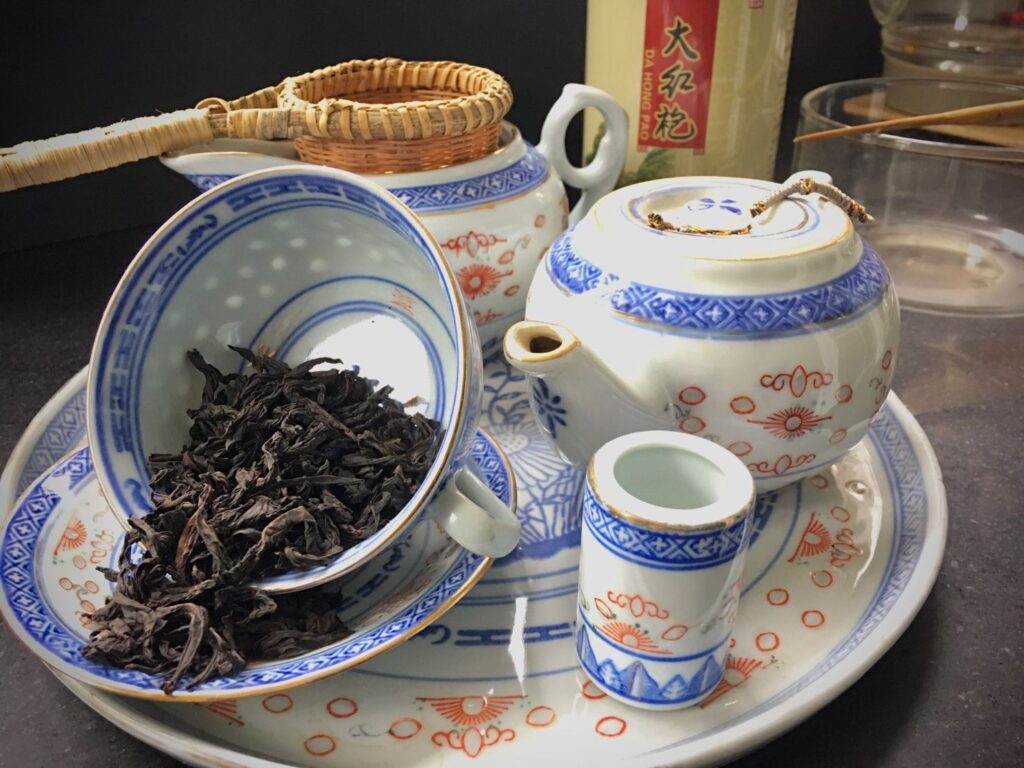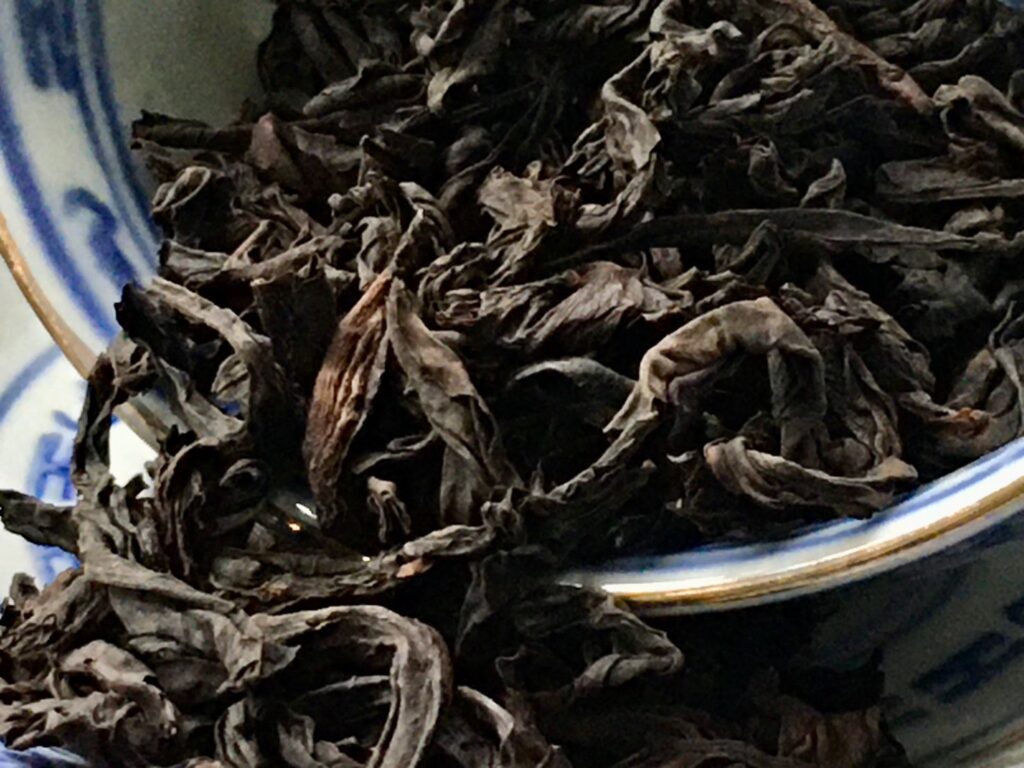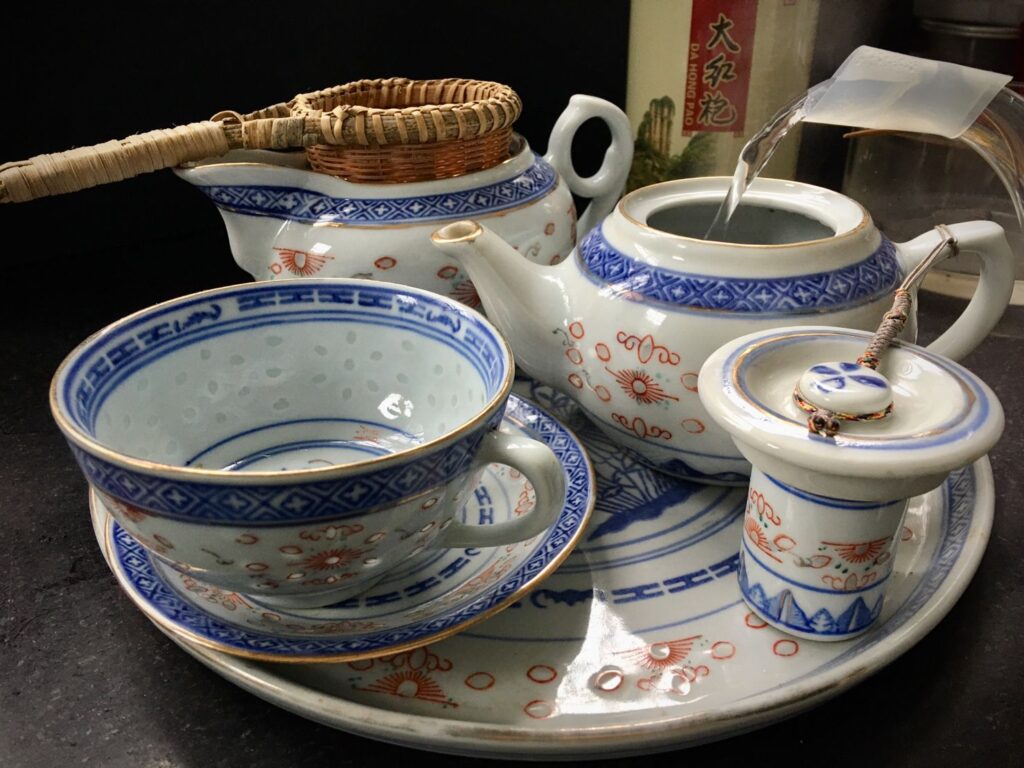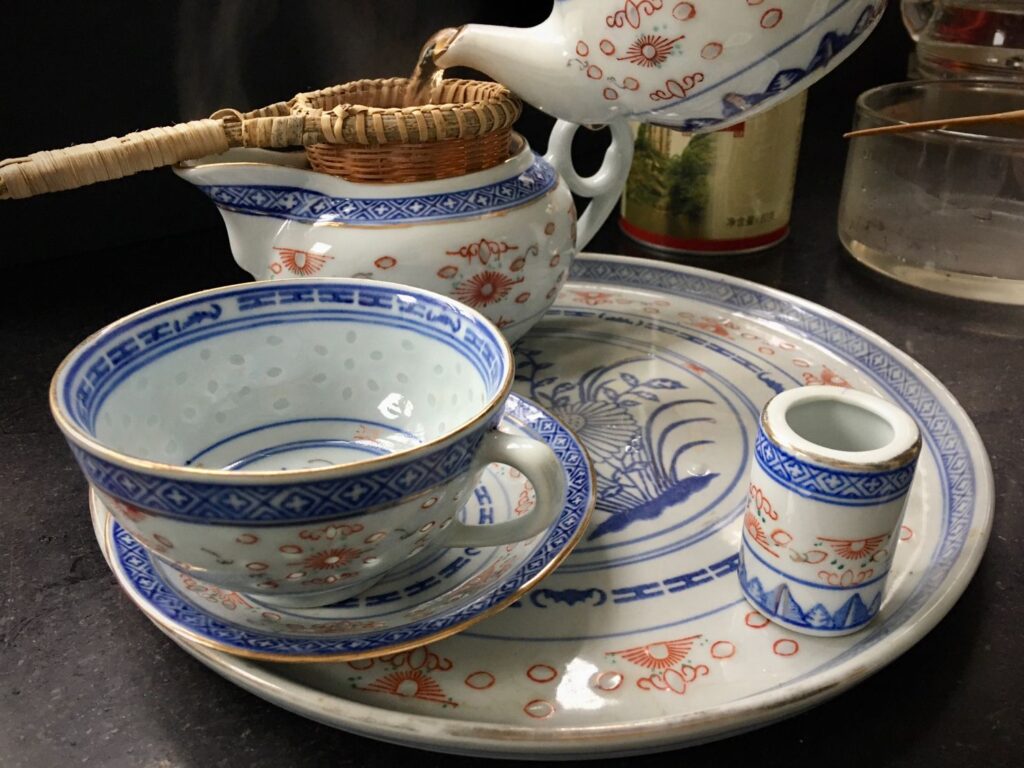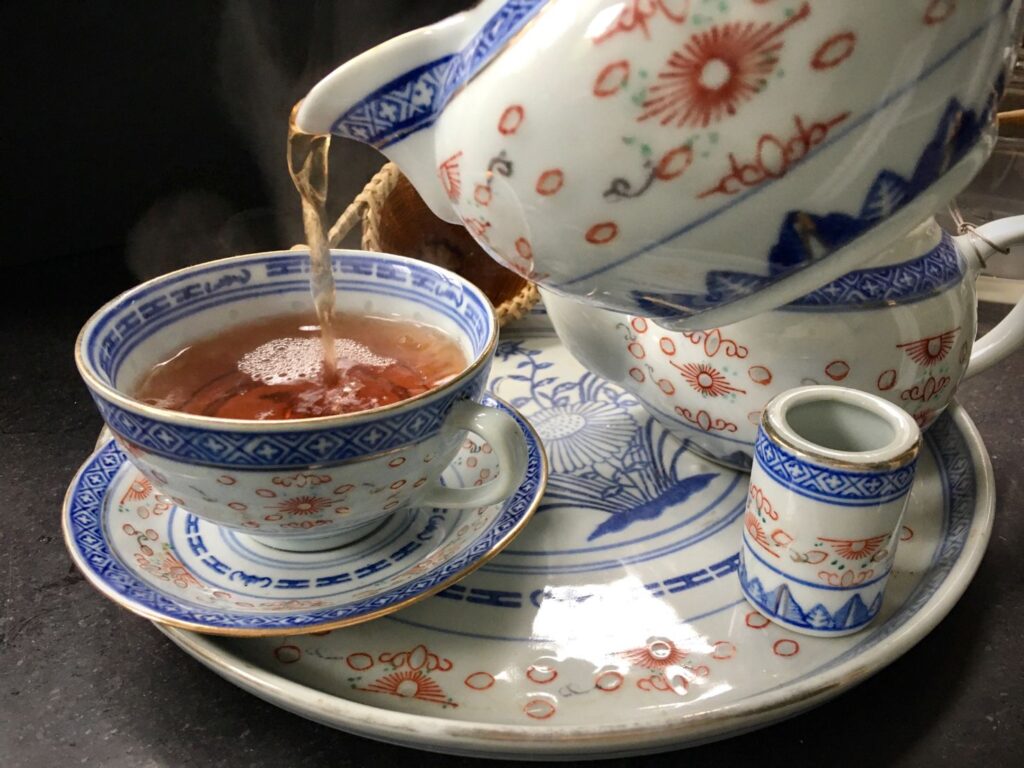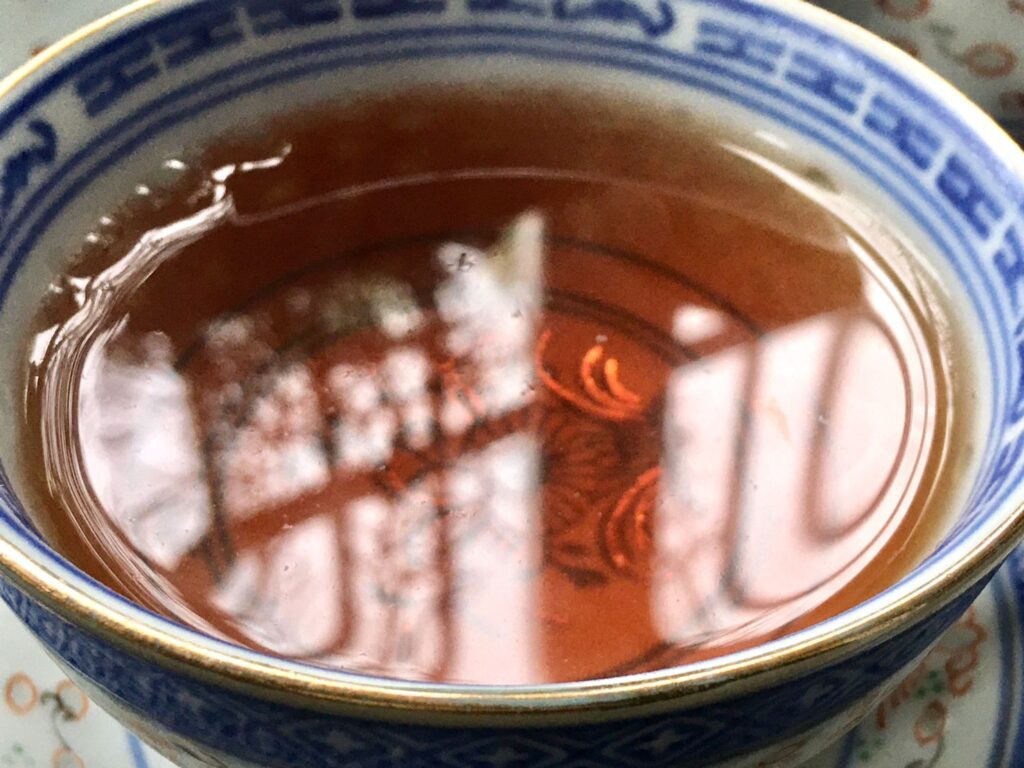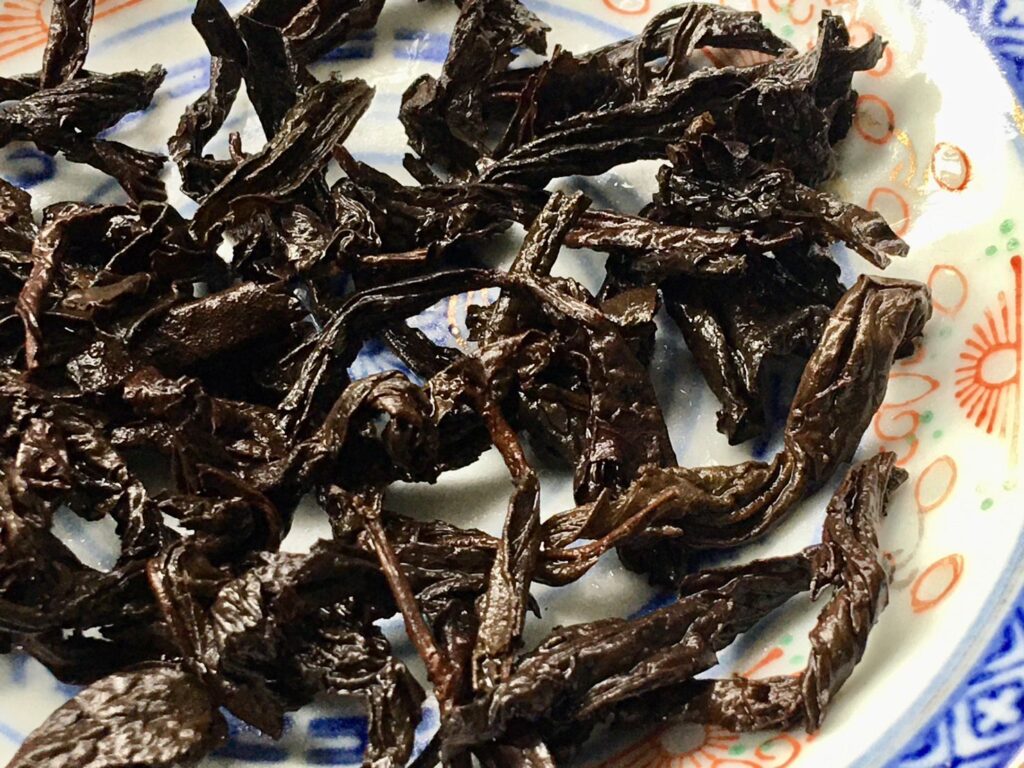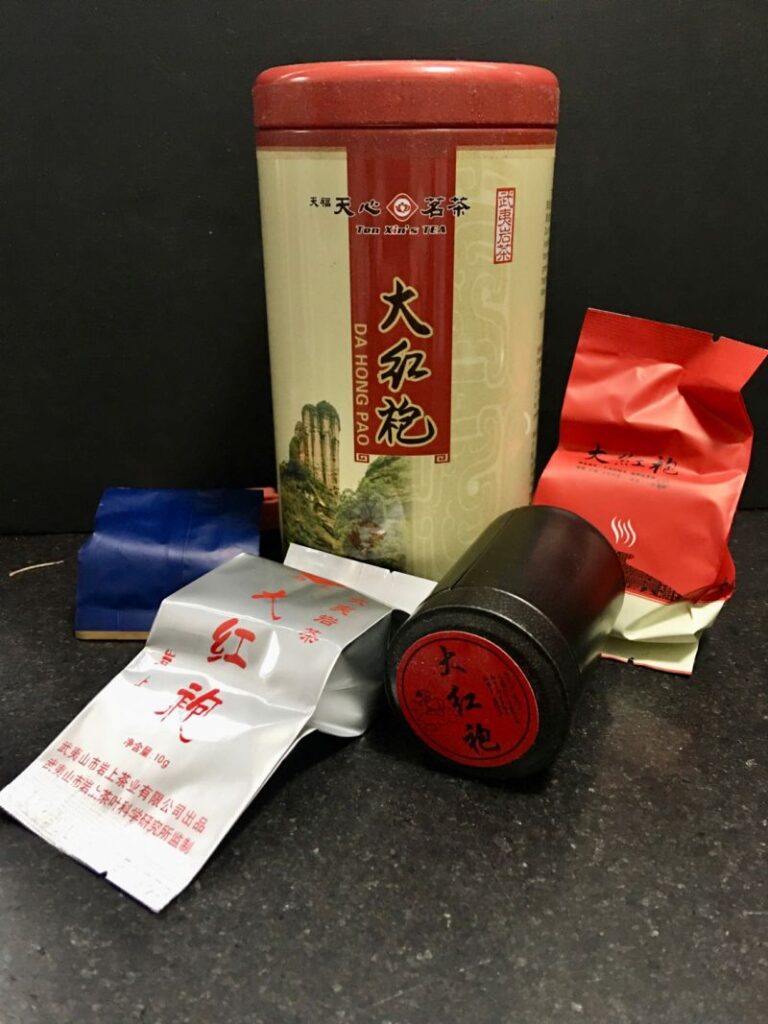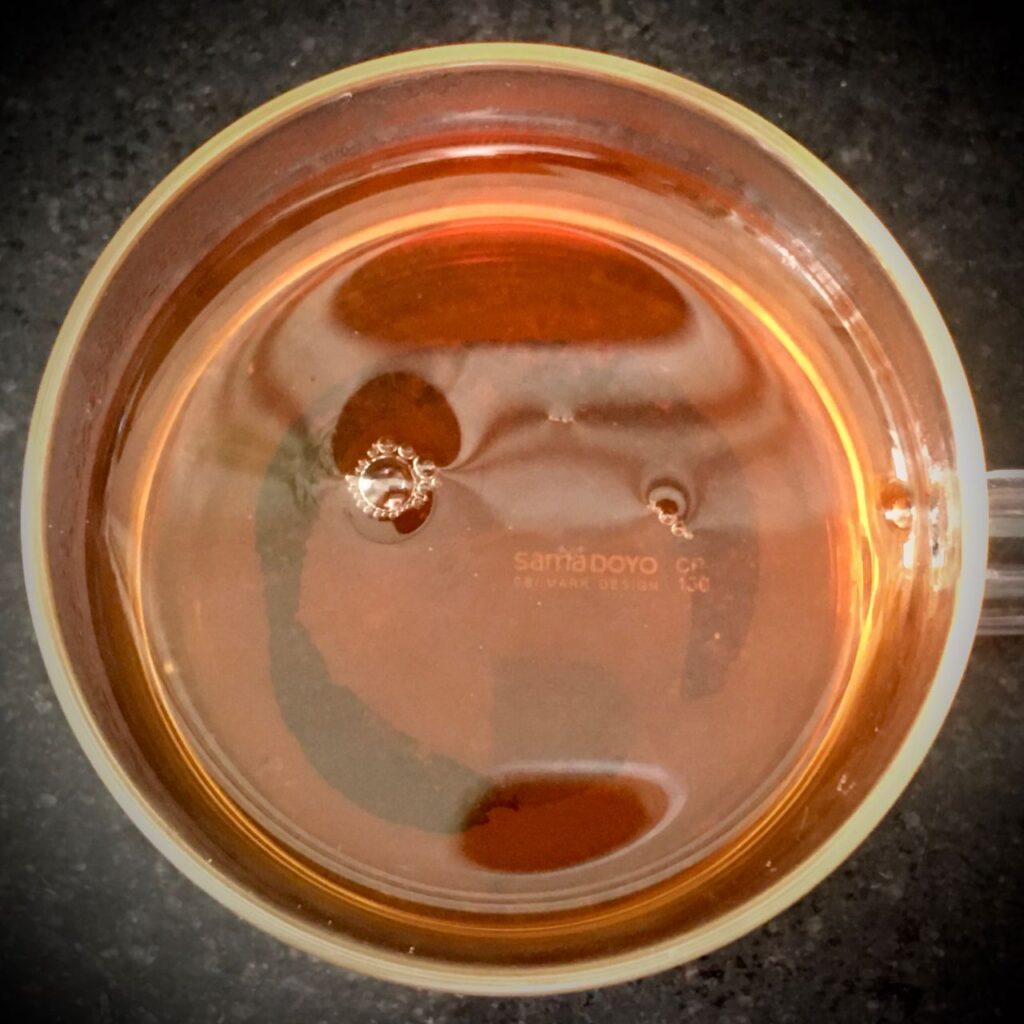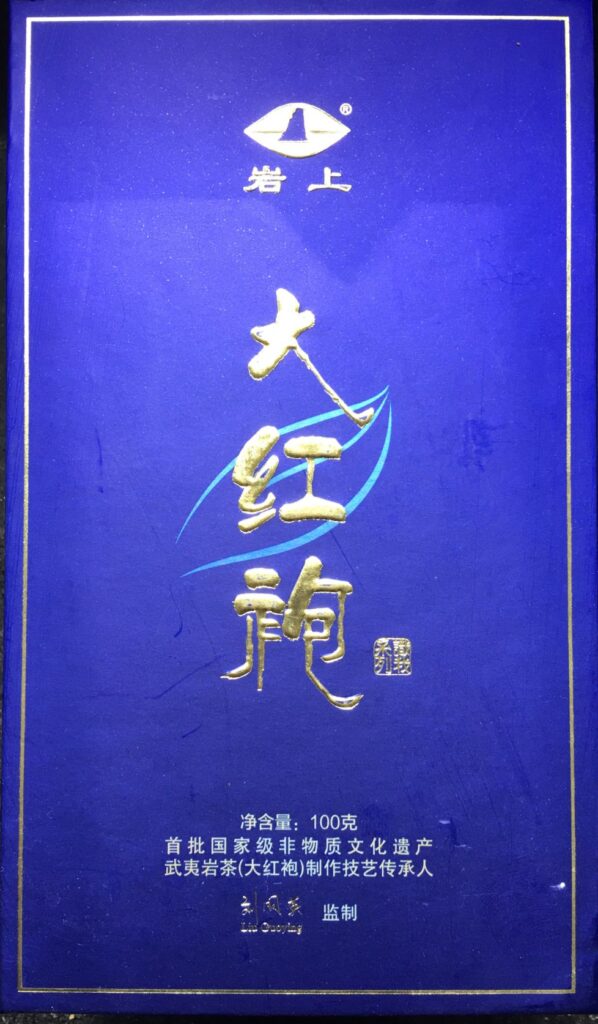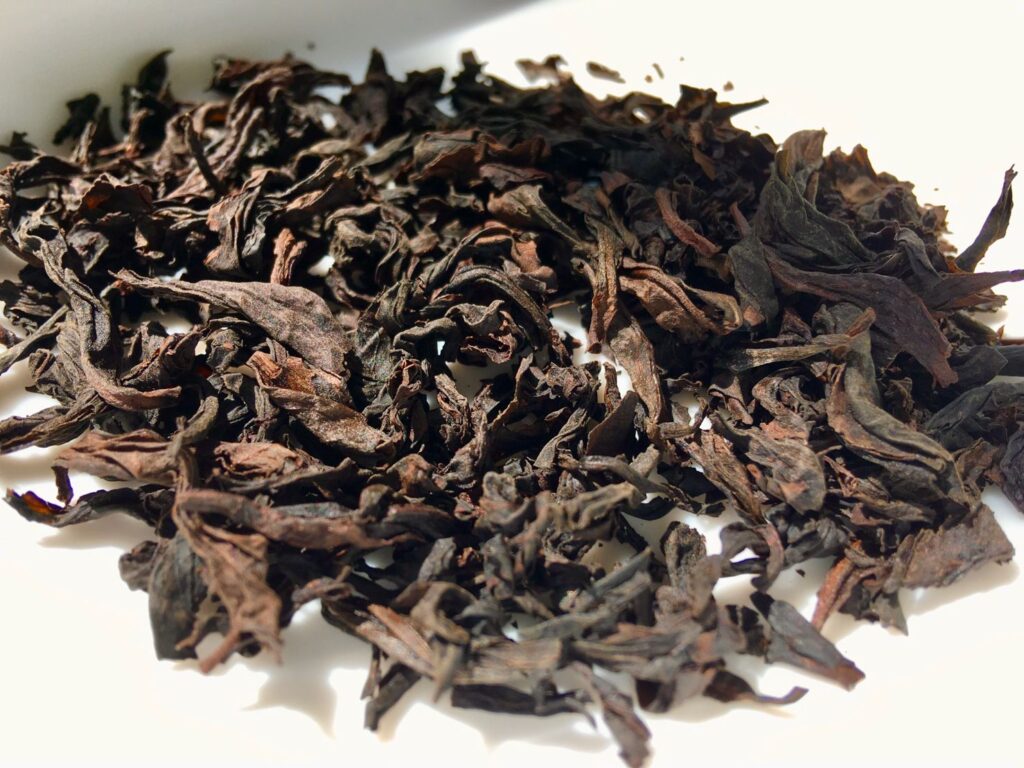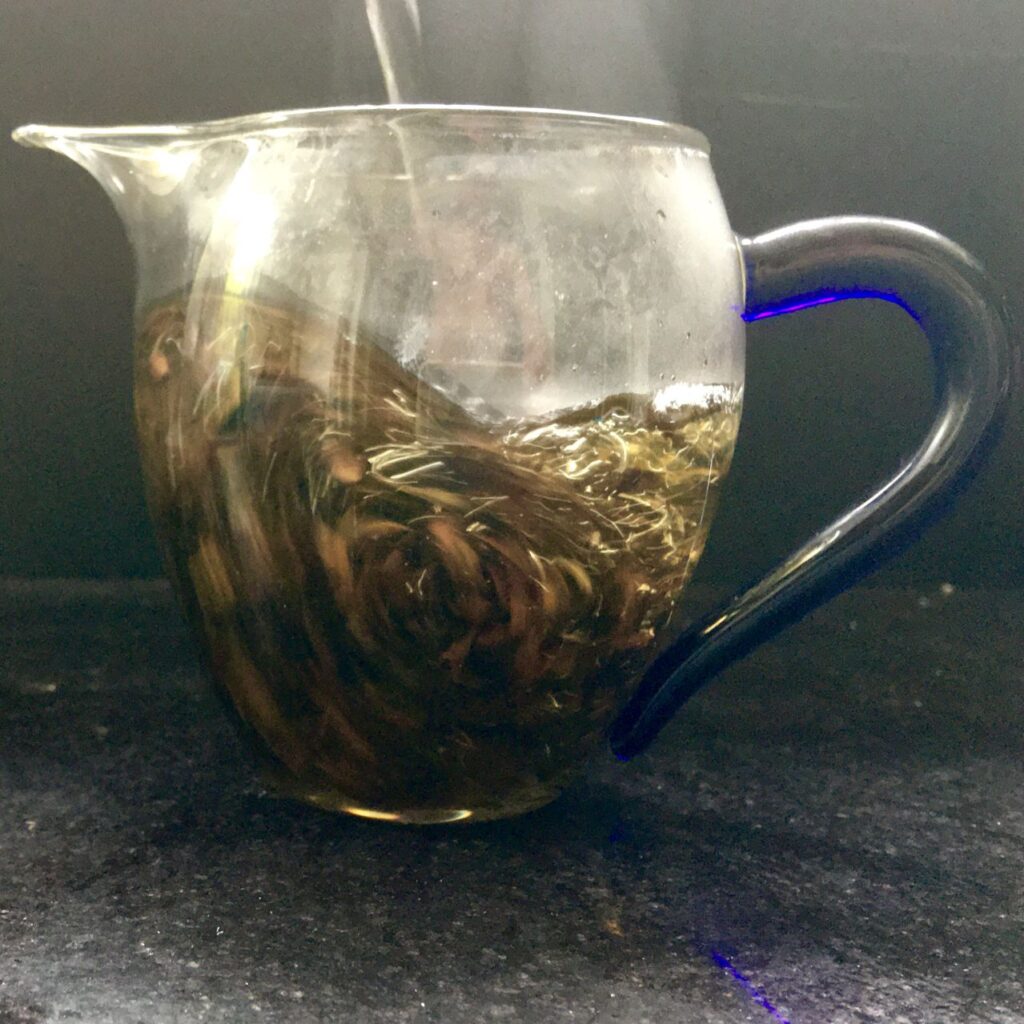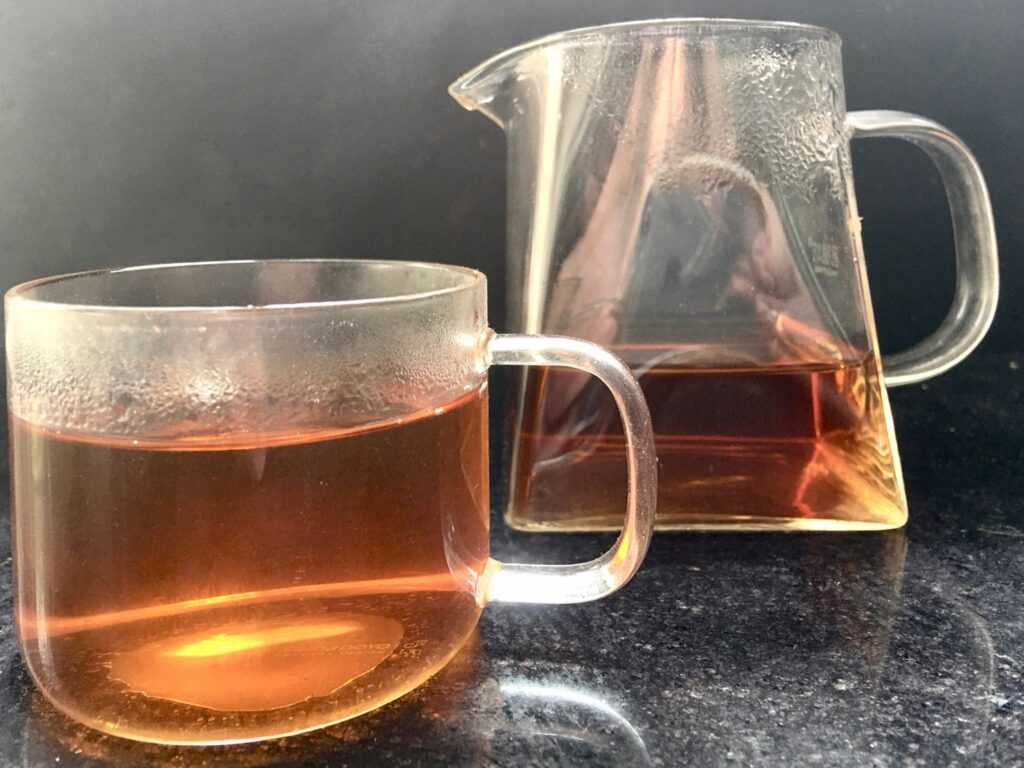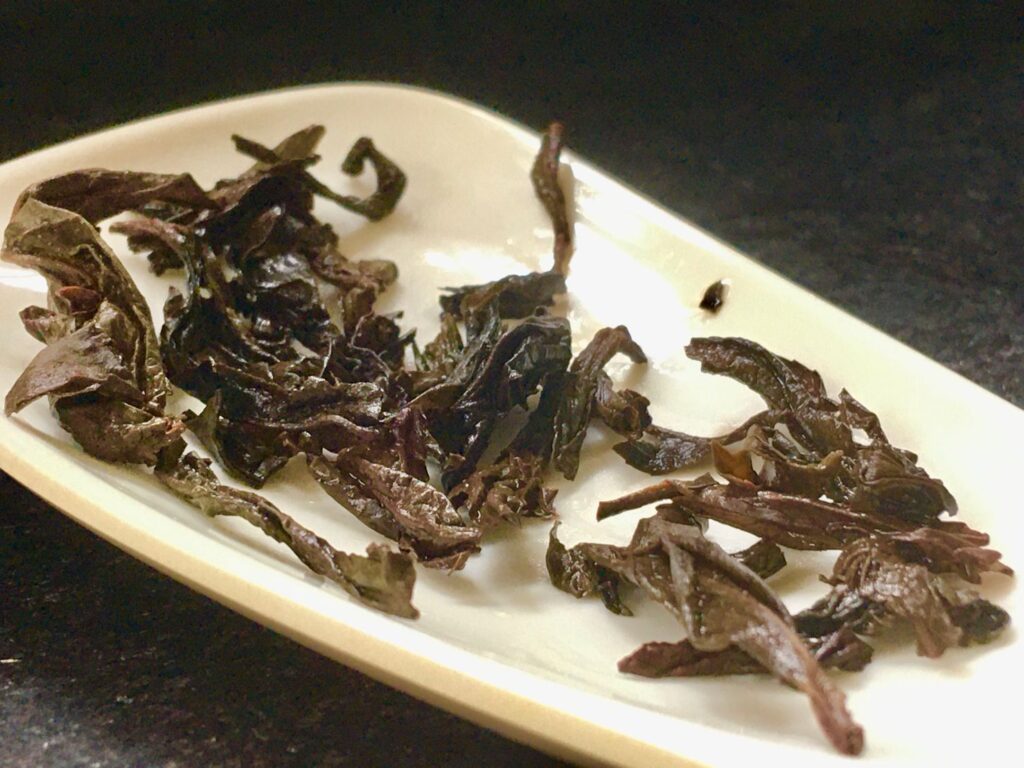C. sinensis var. rou gui (cinnamon bark); Wuyishan, Nanping, Fujian Province; approx. 550-650m; Late Spring, 2022; 3-4 Leaves; Oolong Tea Process; #TodaysTea, #今天的茶, #JīnTiāndeChá, #Tea, #茶, #Chá.
The appearance of the dry leaf is long listed, moderately straight, black to charcoal grey in colour with reddish brown tints. The dry leaves have an aroma suggestive of Chocolate, plum, sweet charcoal, undefined spice. In comparison, when wet the leaves are mostly whole leaf with a few broken pieces. They appear to be a deep, dark brown colour with olive green tinge and retain their dry leaf, twisted appearance, and have an aroma that hints of smoke, charcoal, tobacco, followed by a sharp, green vegetal scent.
I infused 8g of dry leaf in 180ml od water for 2-3sec. @100deg. C plus 10 sec. pour into the Fairness Cup.The liquor colour was Orange,mand the aroma was Smoky, woody, like a damp campfire and Mildly acrid.
In the mouth it was thick, syrupy, creamy, suggestive of white melon, mildly dry, dusty, metallic, with a watery clean finish, stimulating, tingling, biting, and spicy, with retronasal, musty, floral fresh, hints and a lingering after taste hinting of woodiness with a vague hint of sweetness and pleasant minerality. Its taste has hints of chocolate, a touch of malt, stone fruit, and a late suggestion of raw sugar cane juice.
When I was a kid, we used to pull up long stems of grass that had gone to seed, and then just chew on the white growth end that was that the bottom, this tea is kinda like that, it has that kind of sweetness. It also pairs well with fresh baby tangerines, and Russian Cinnamon-Walnut Bread.
